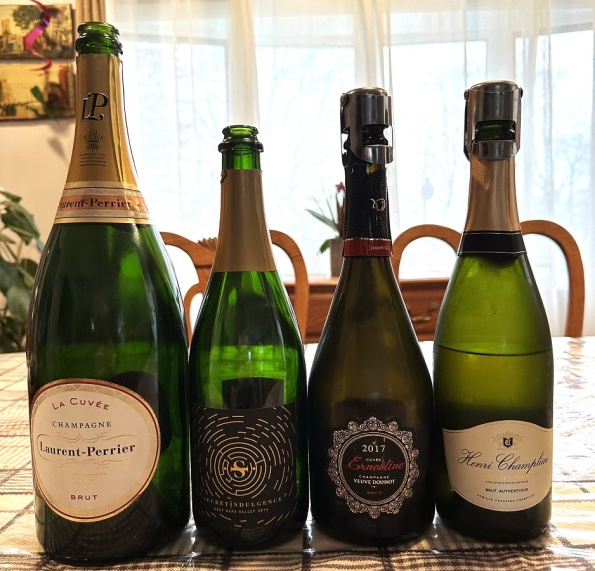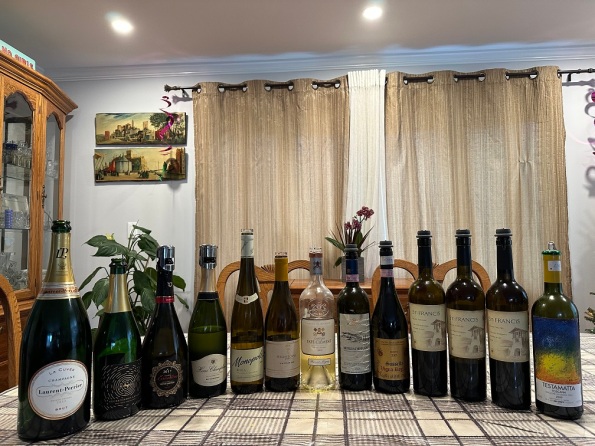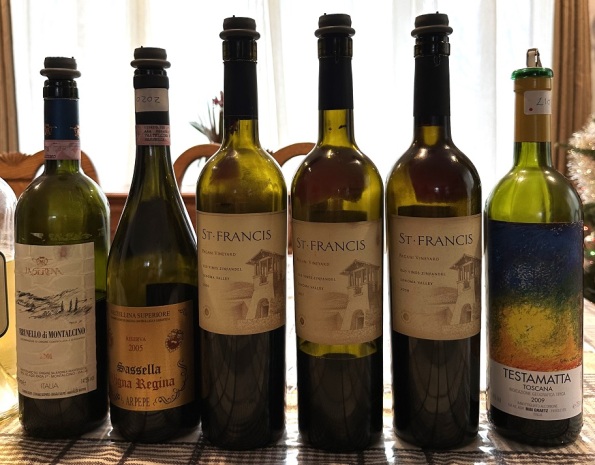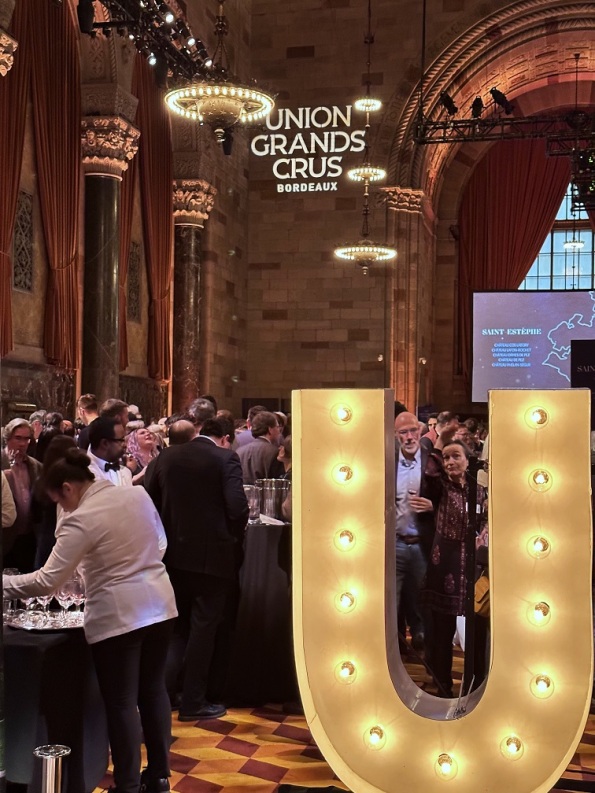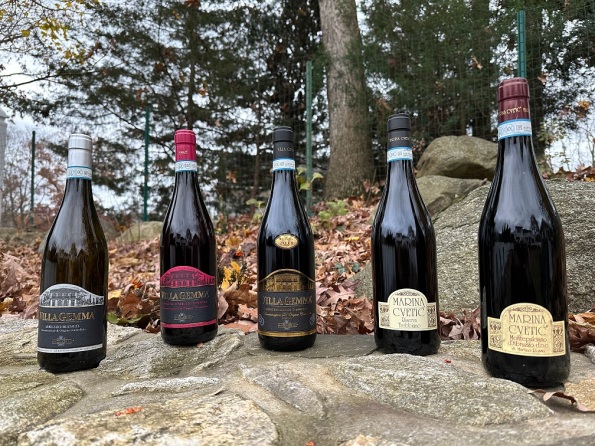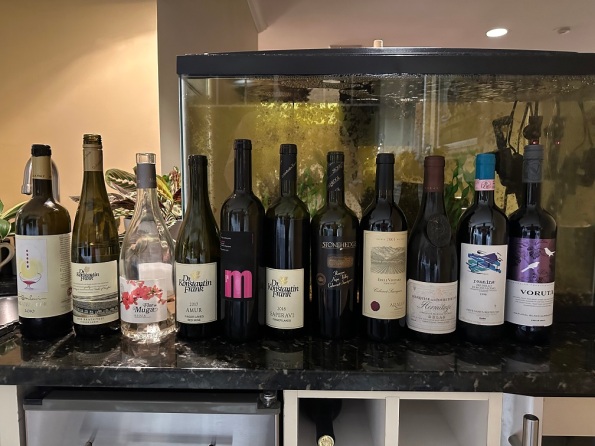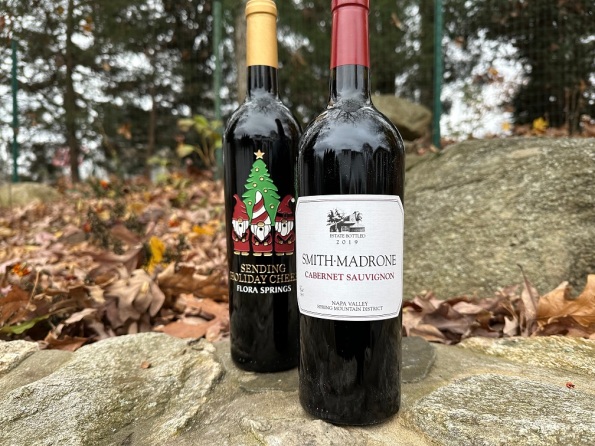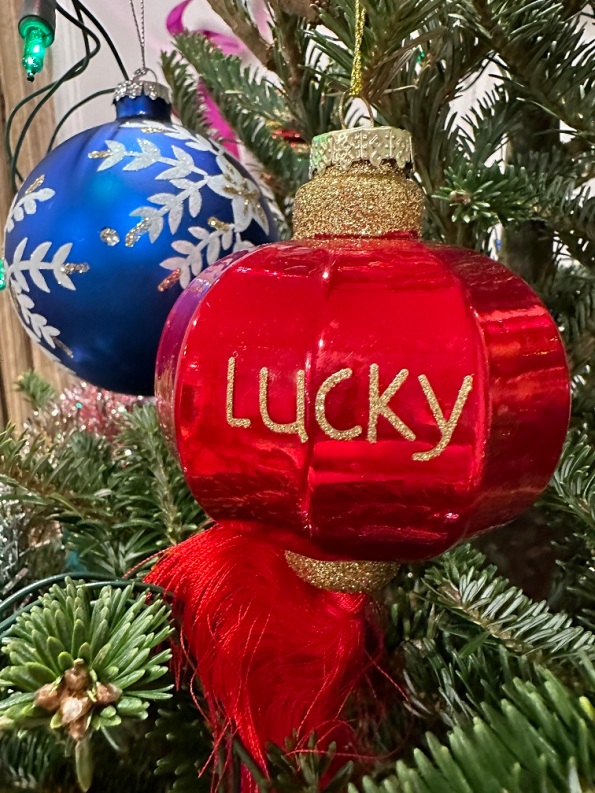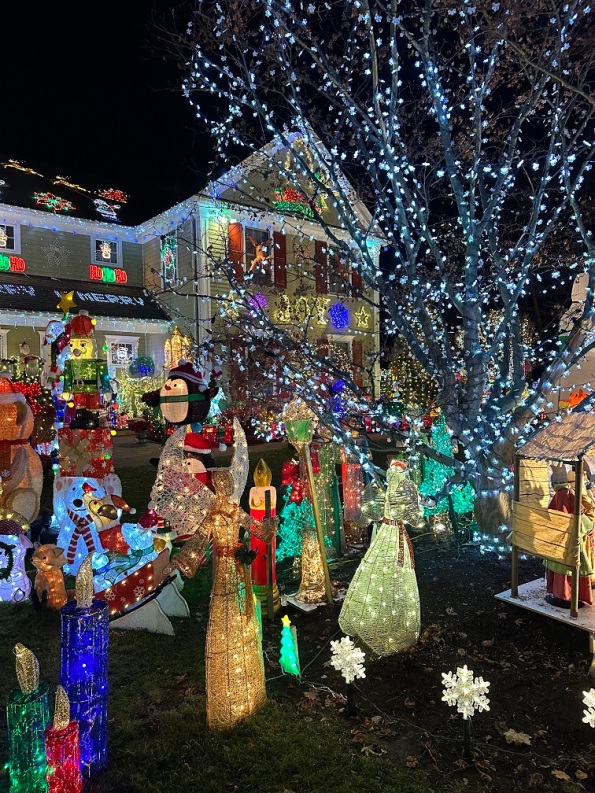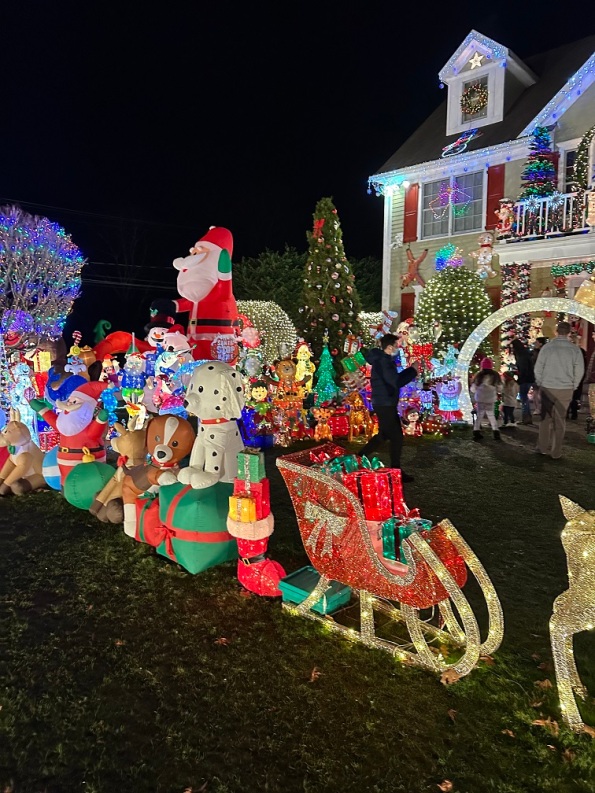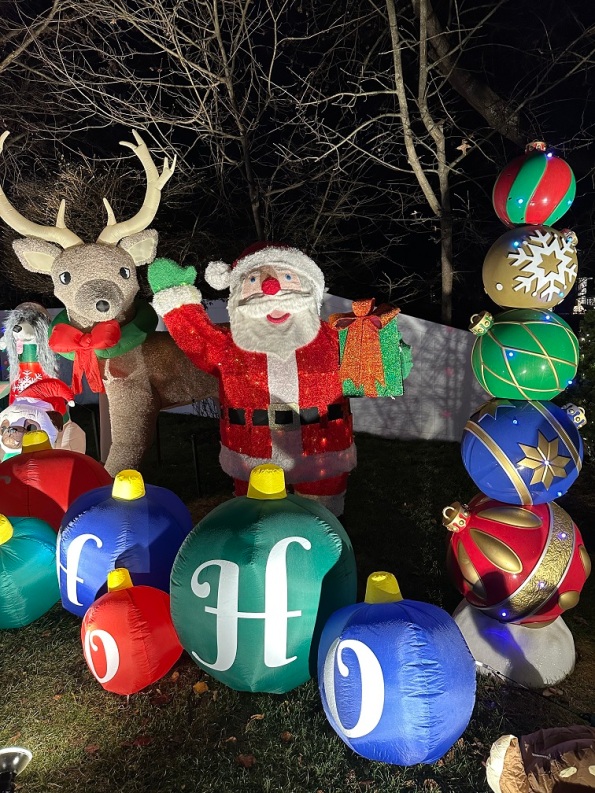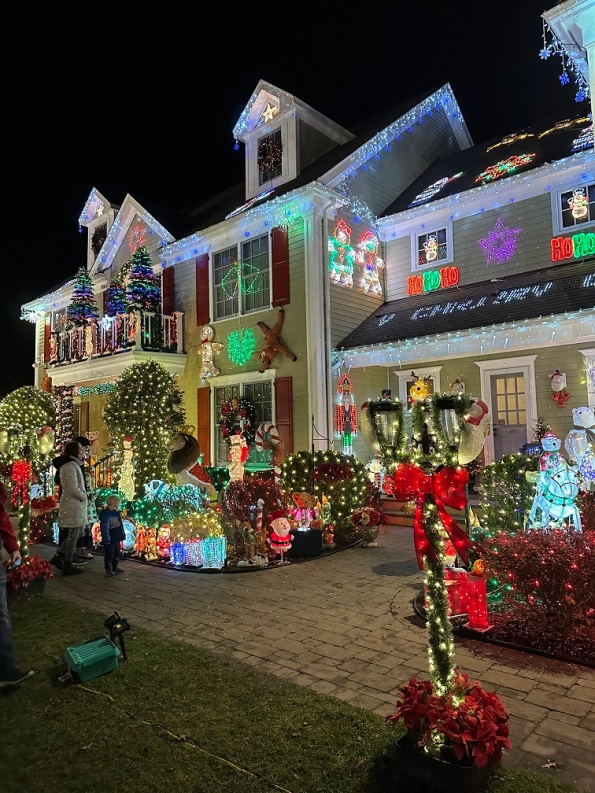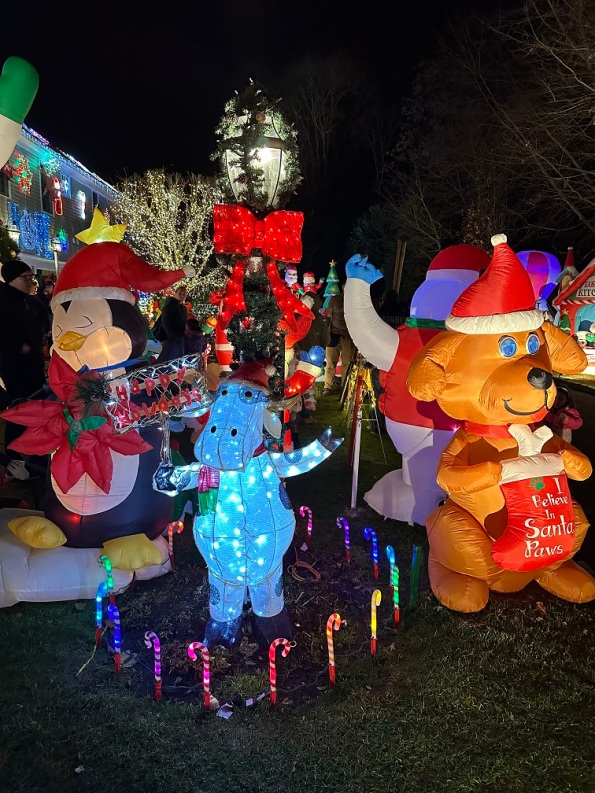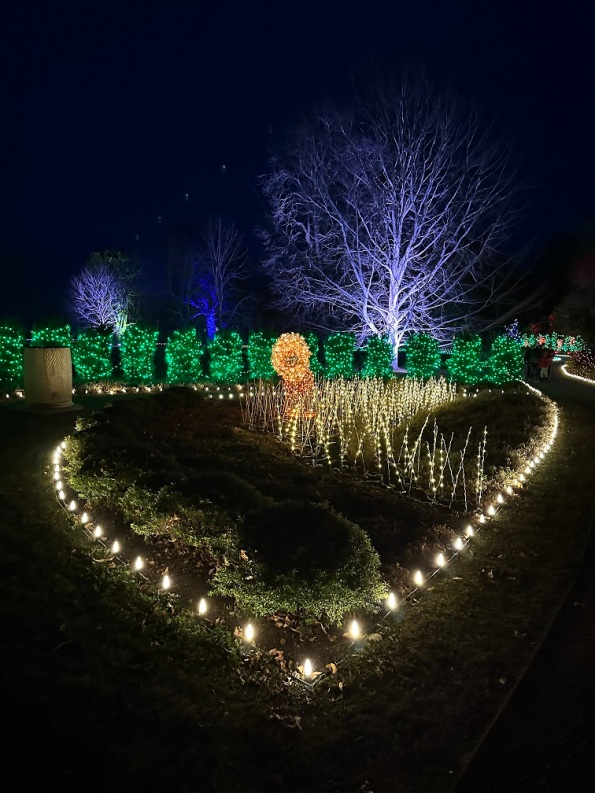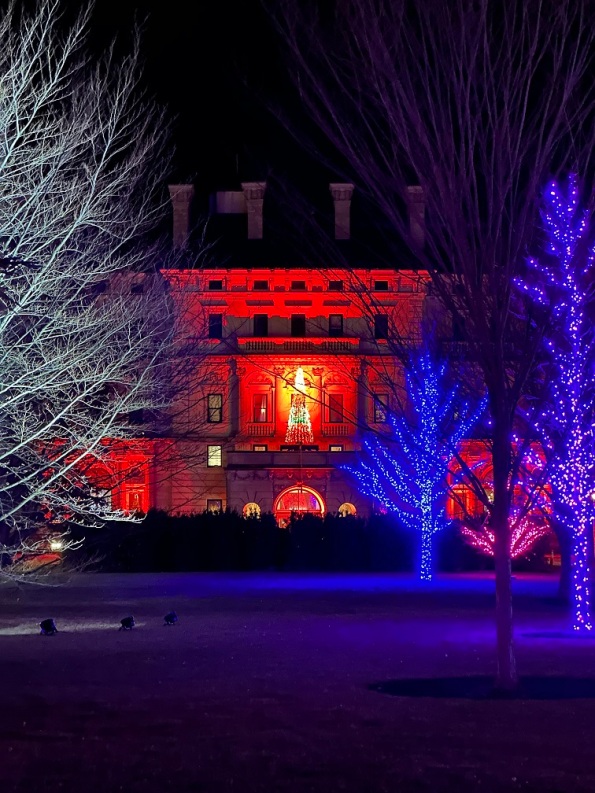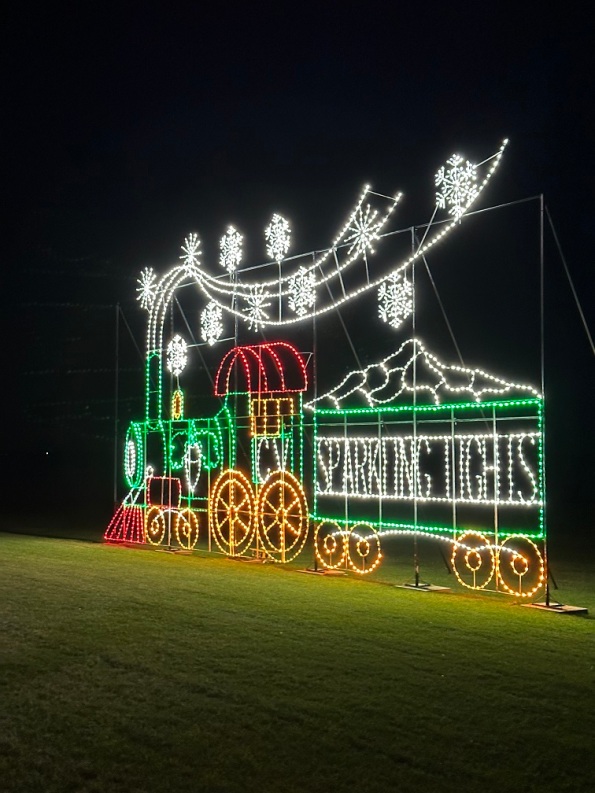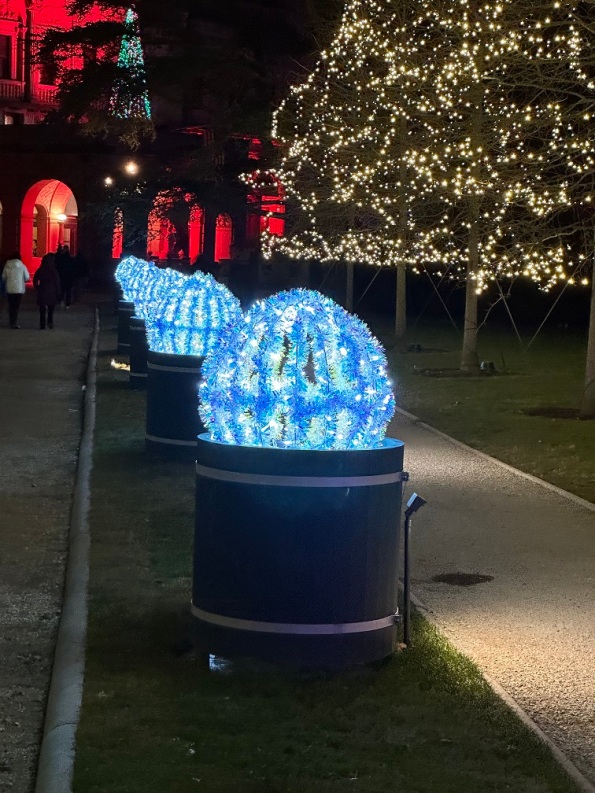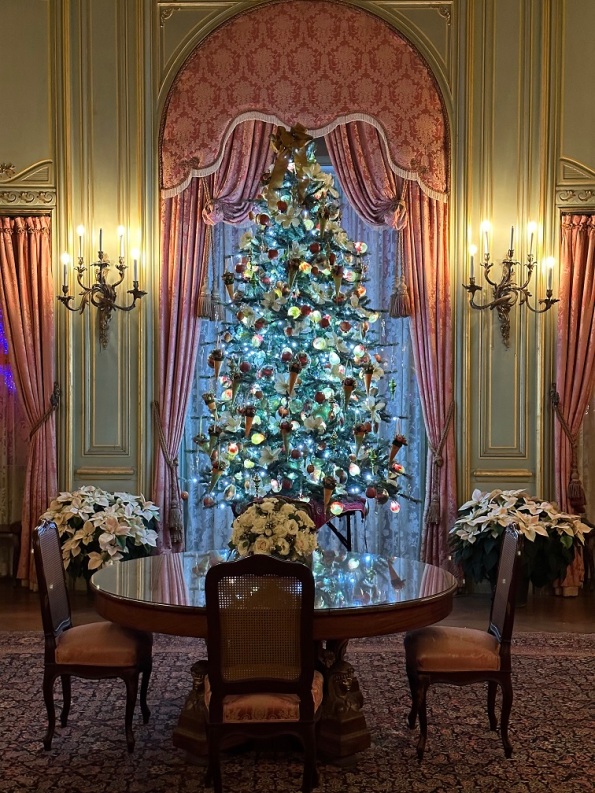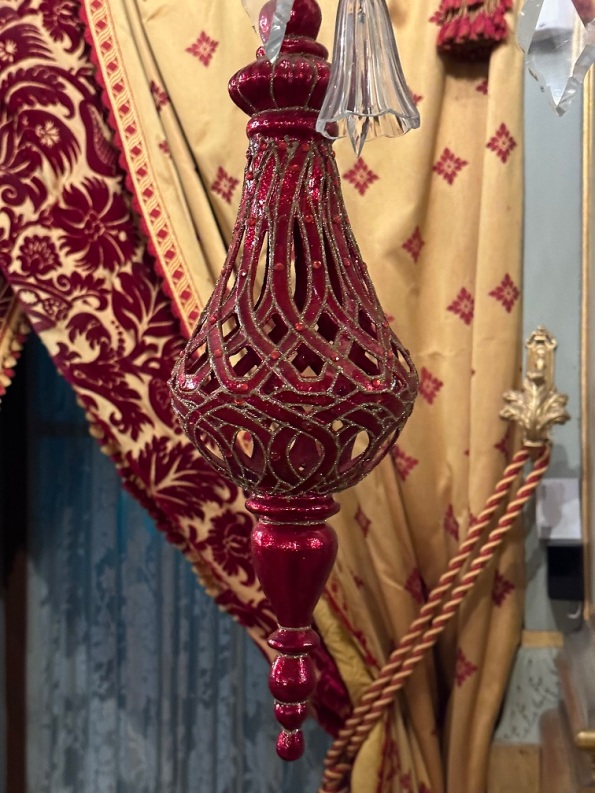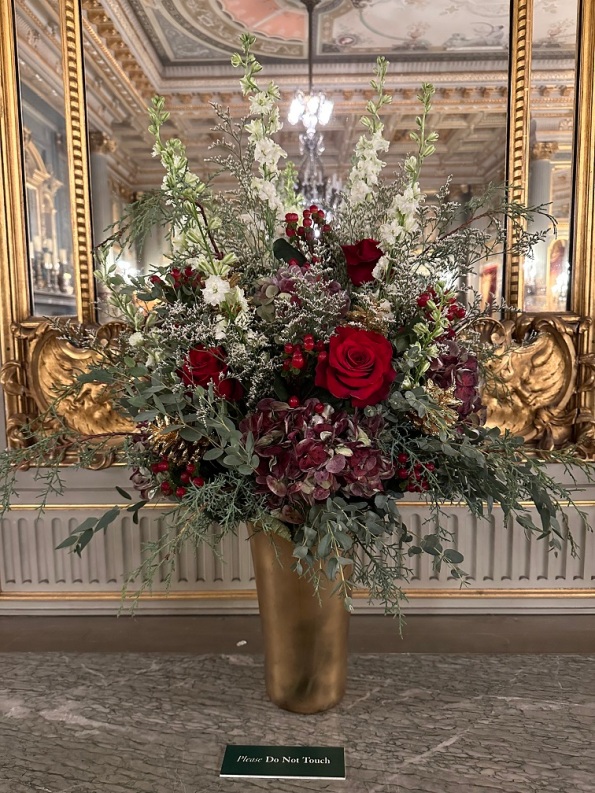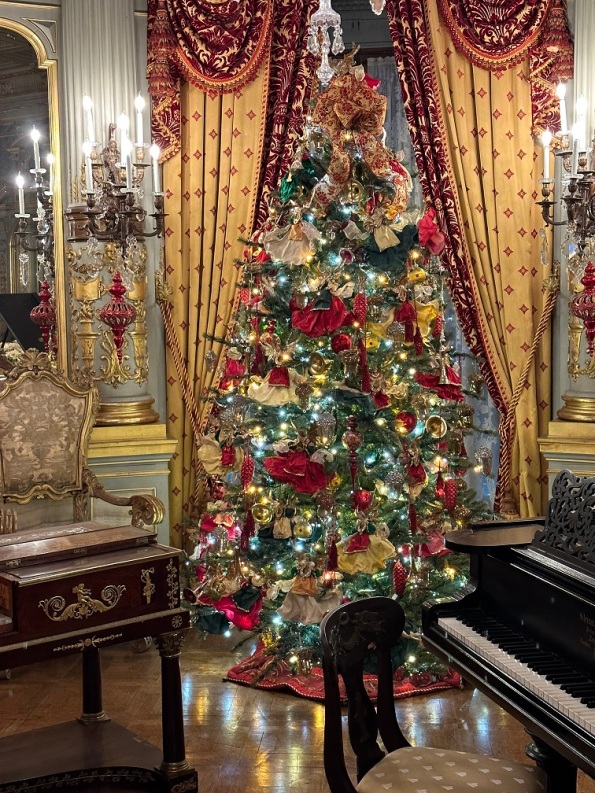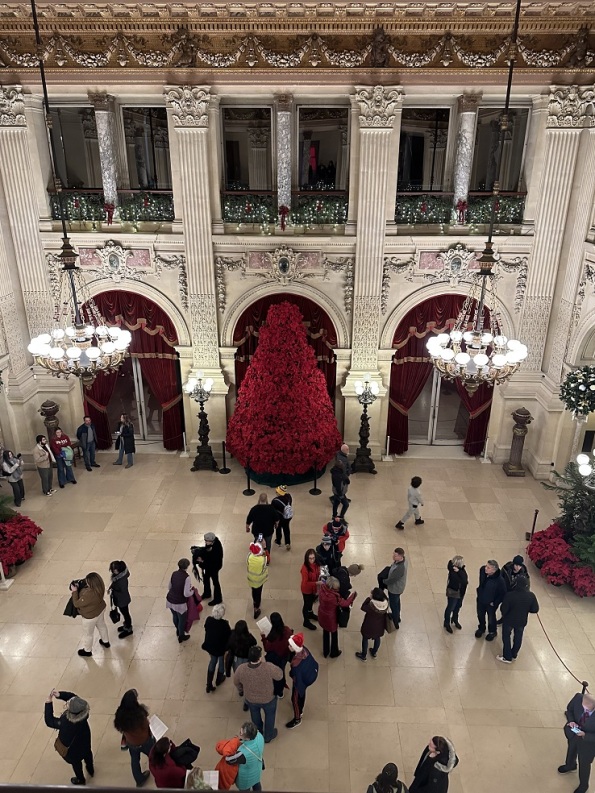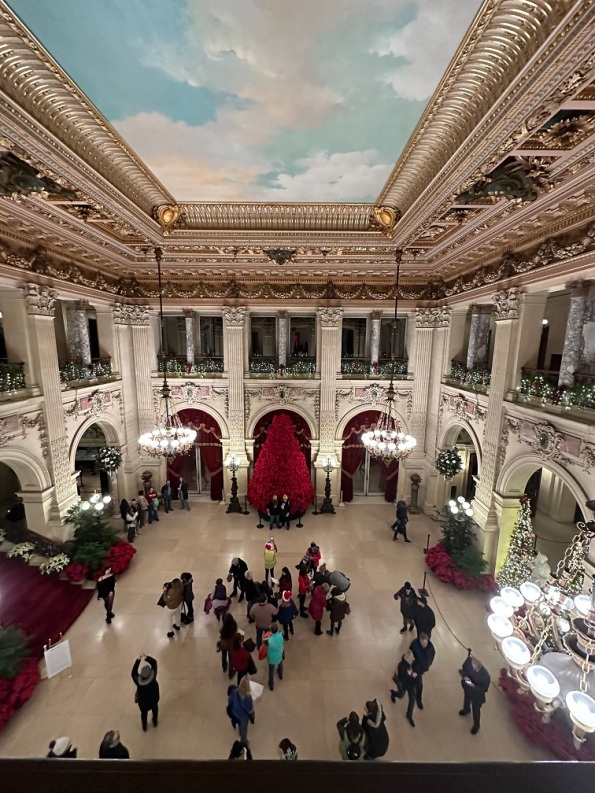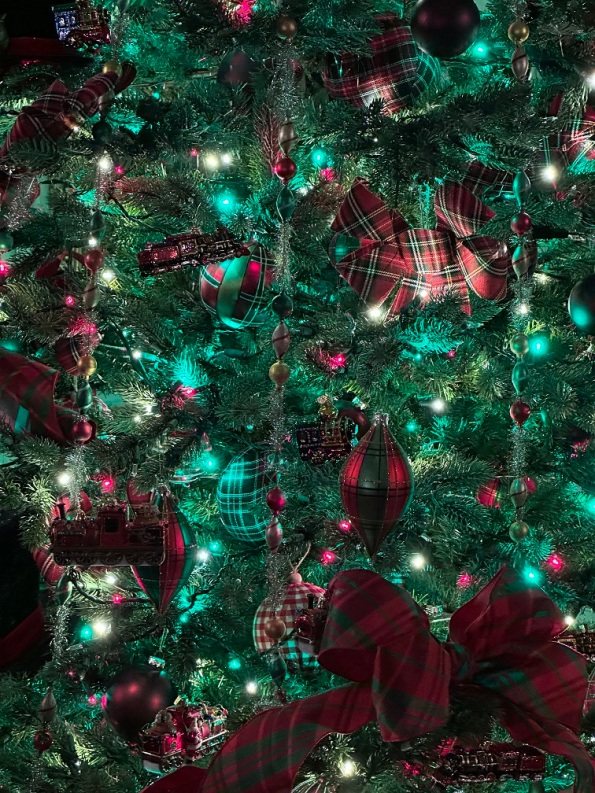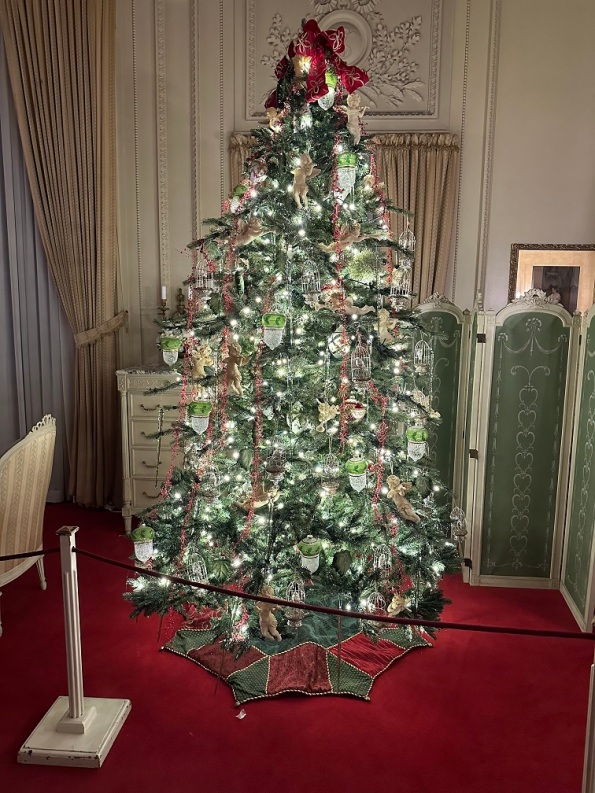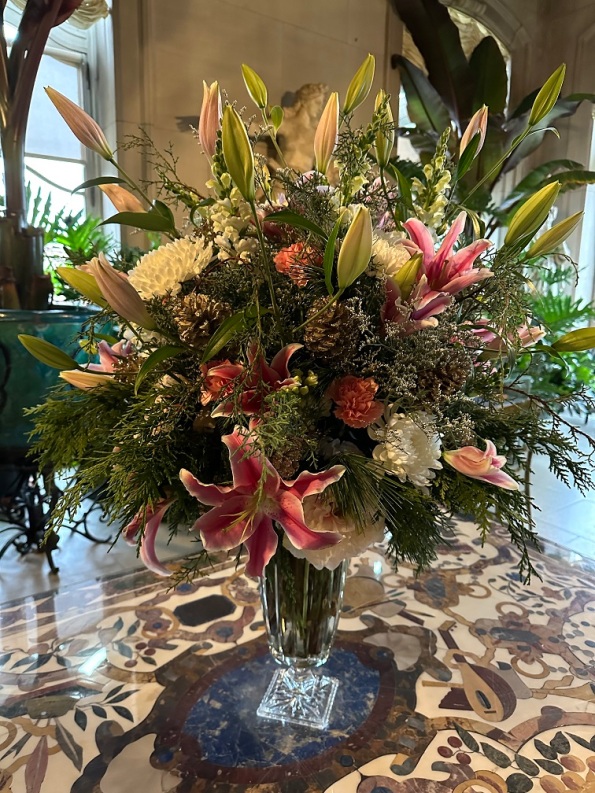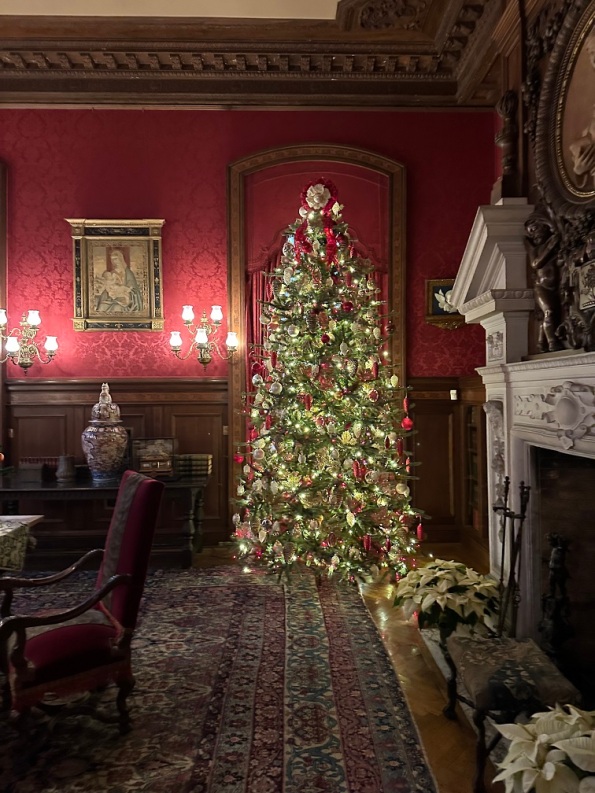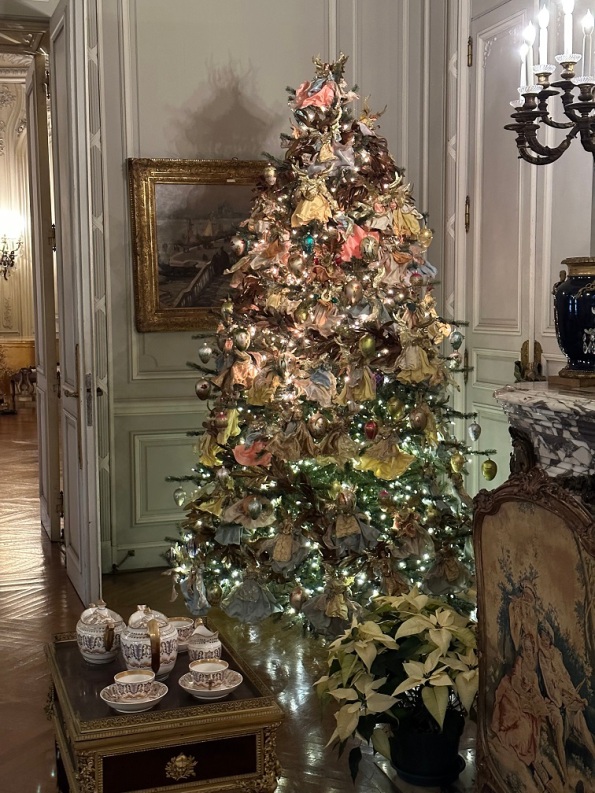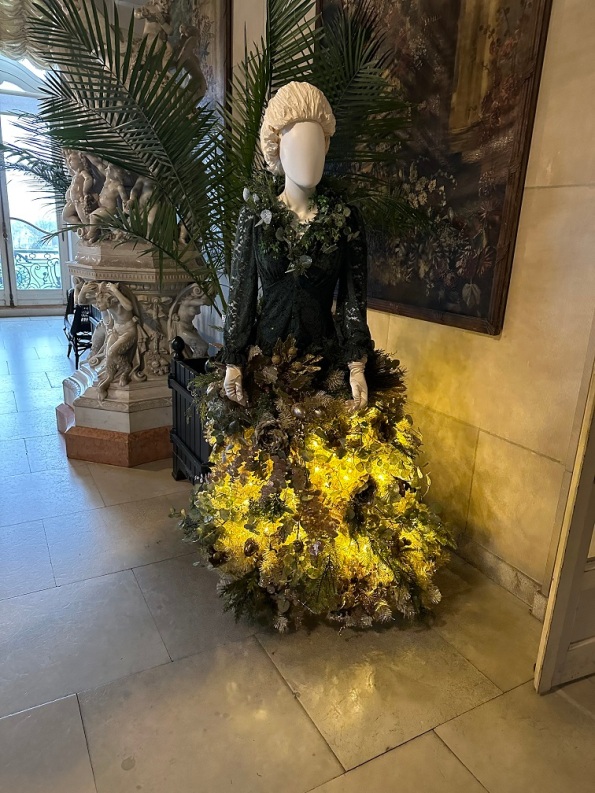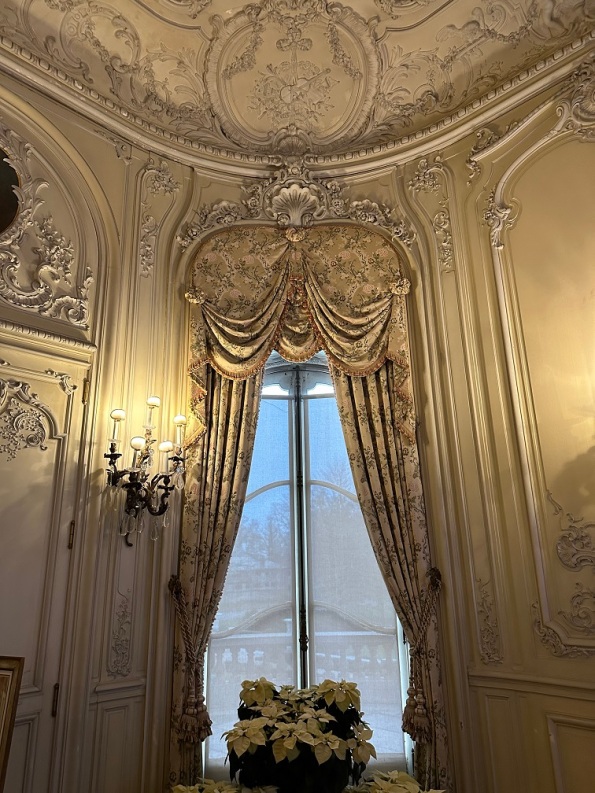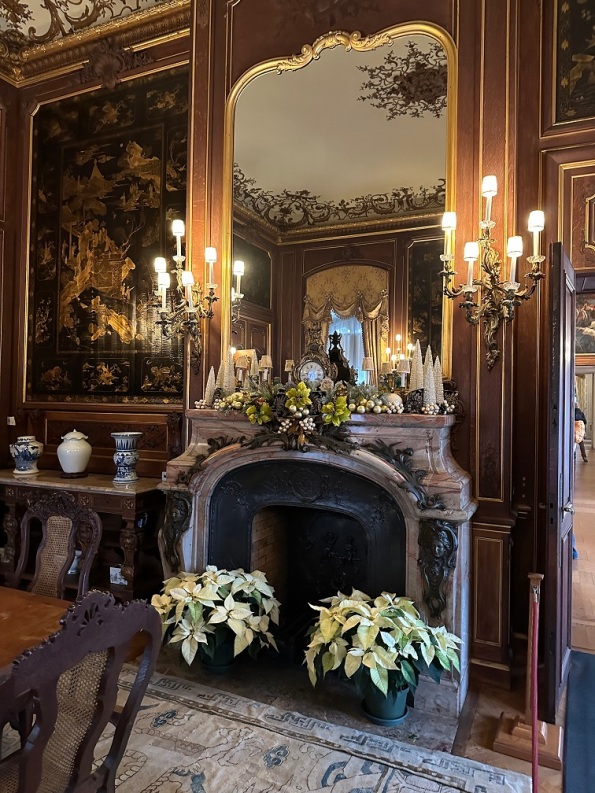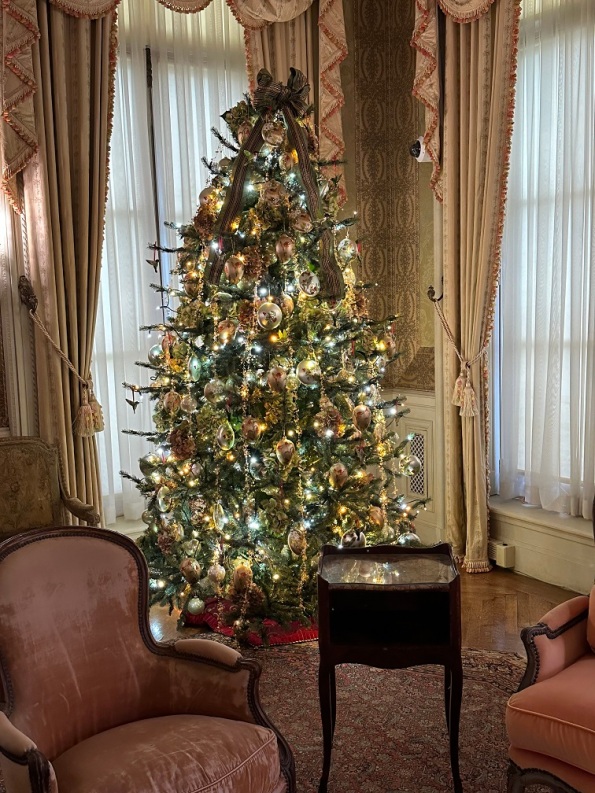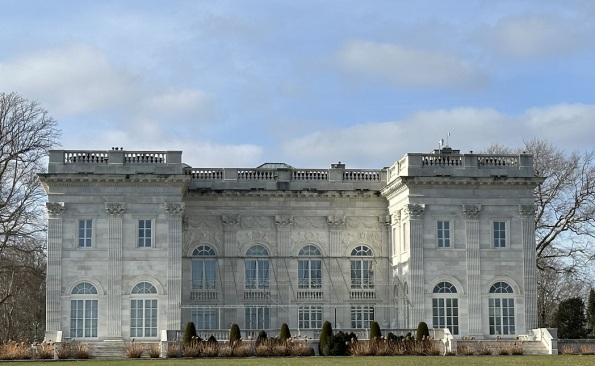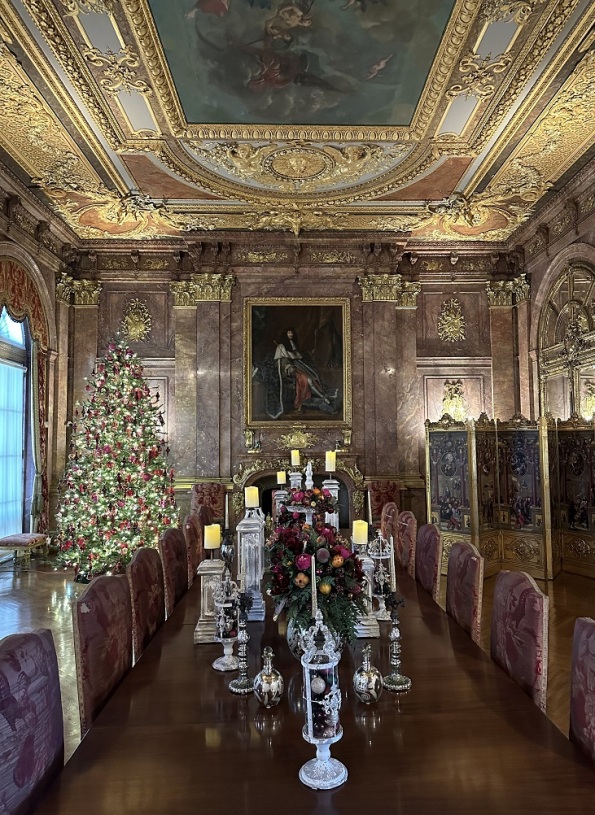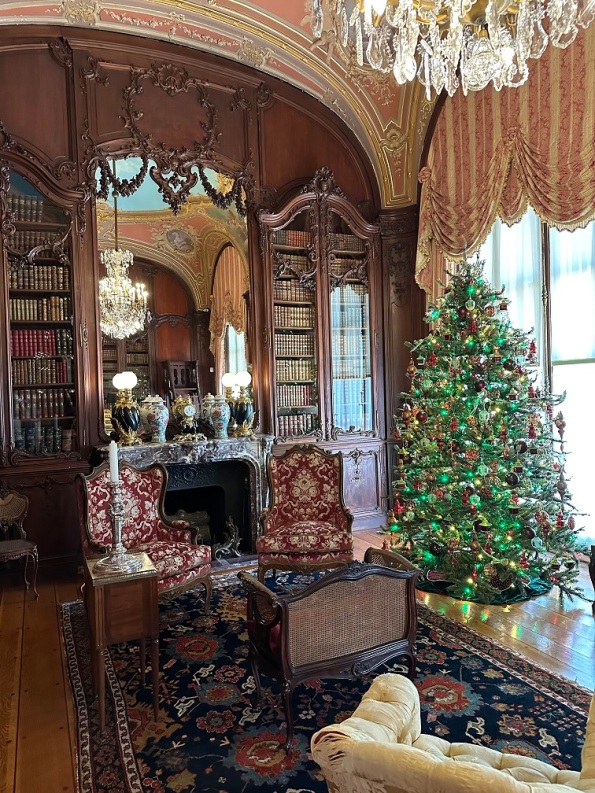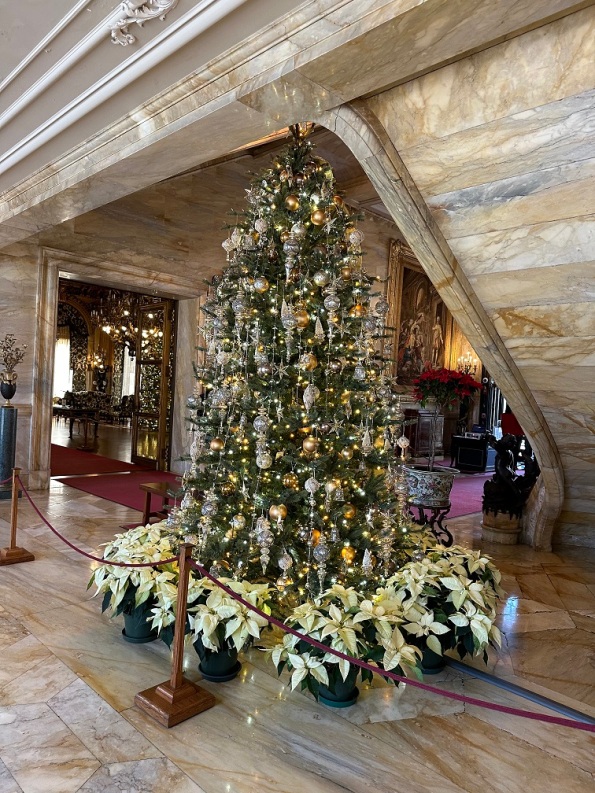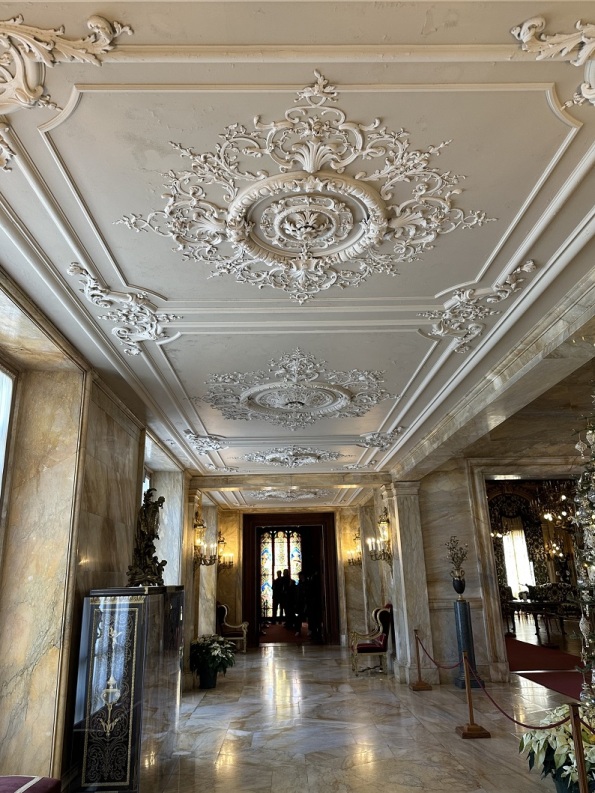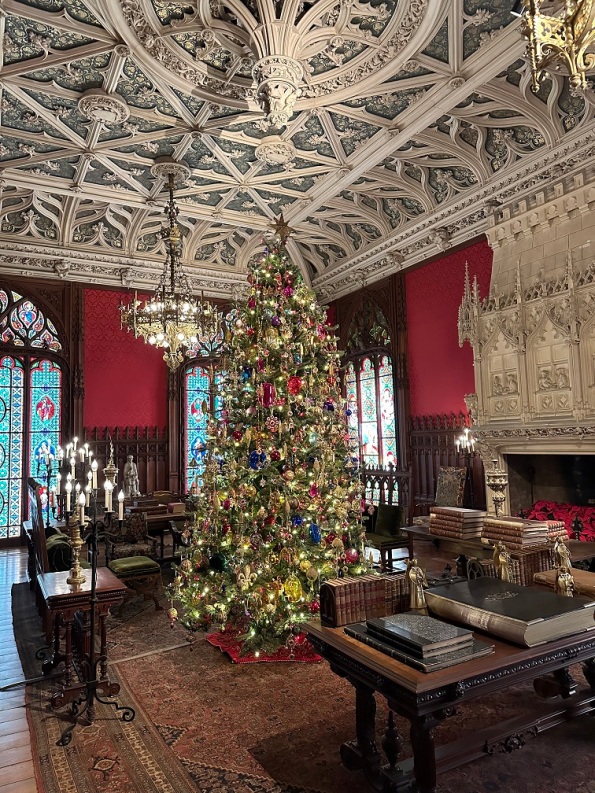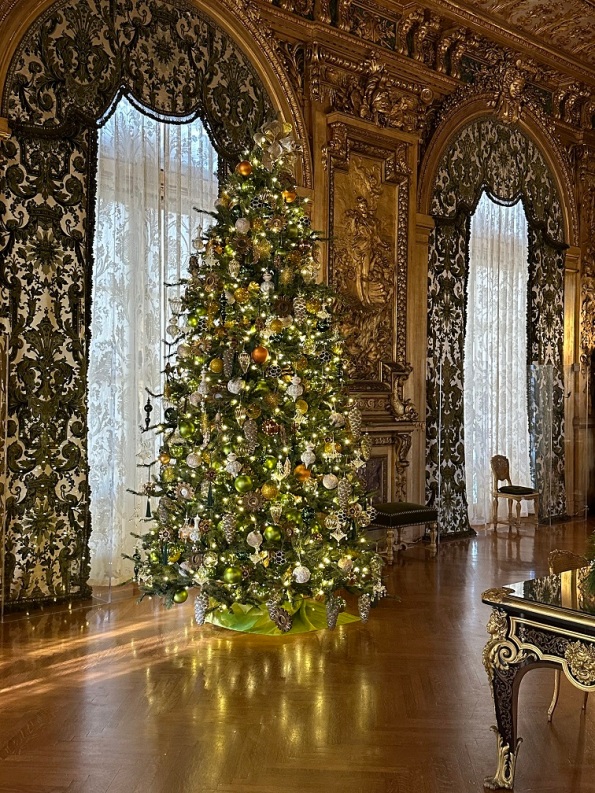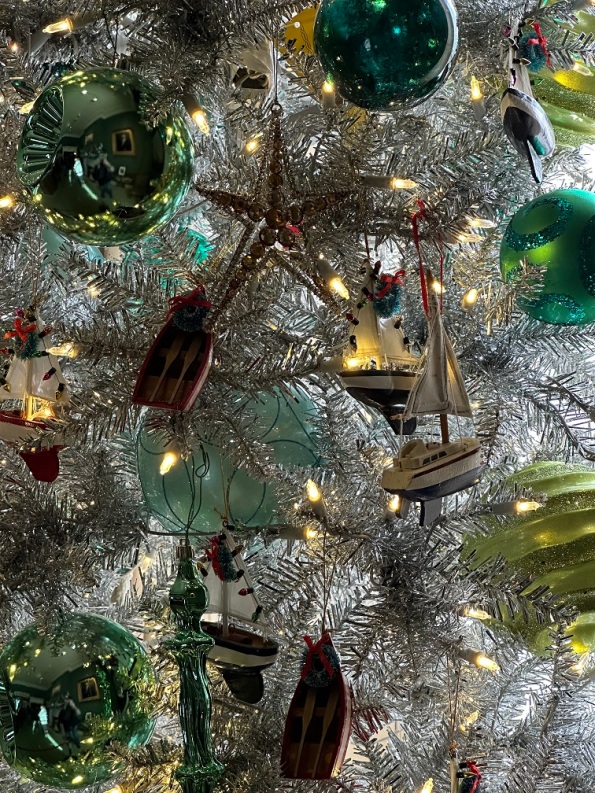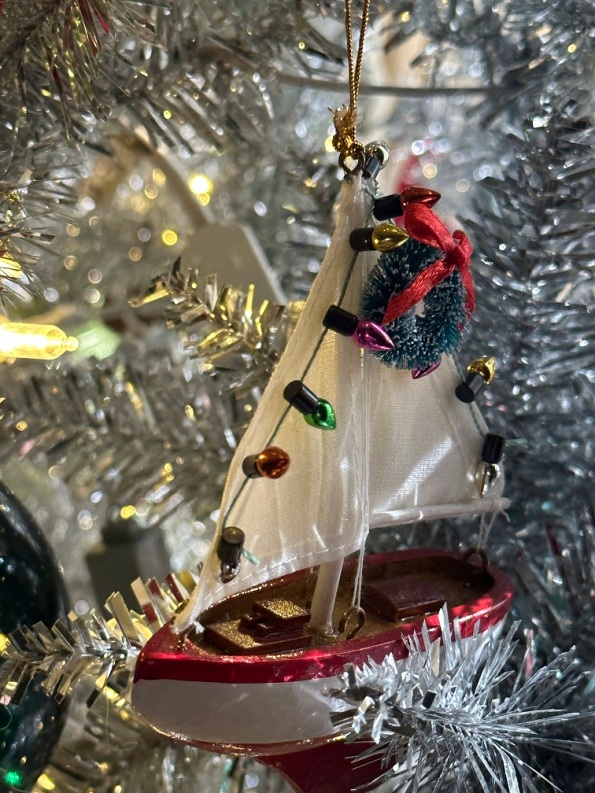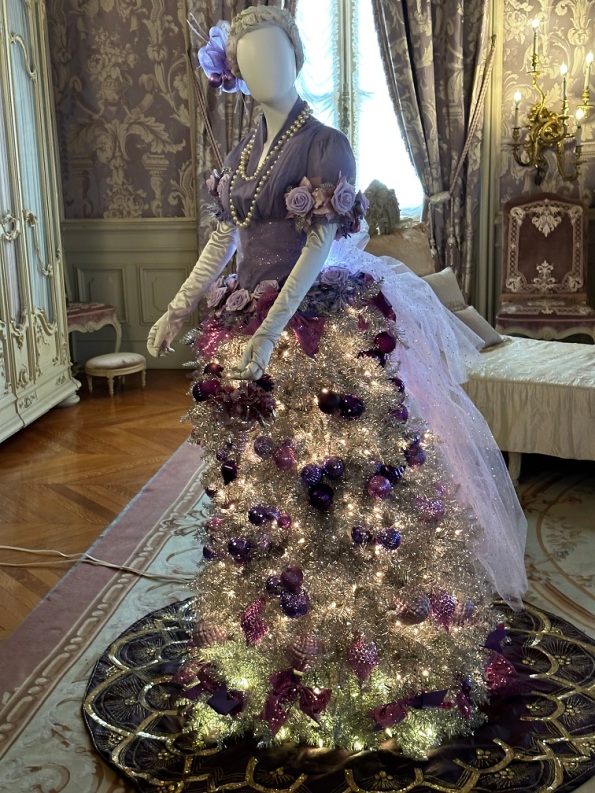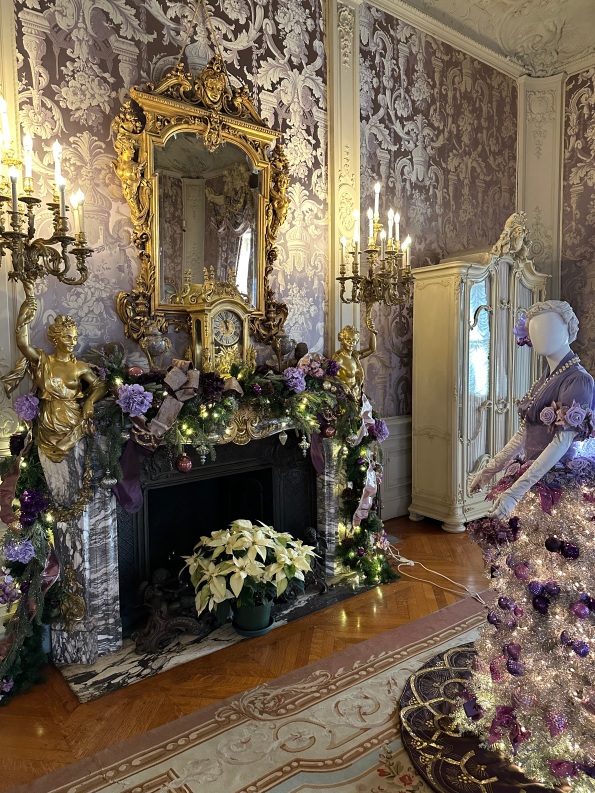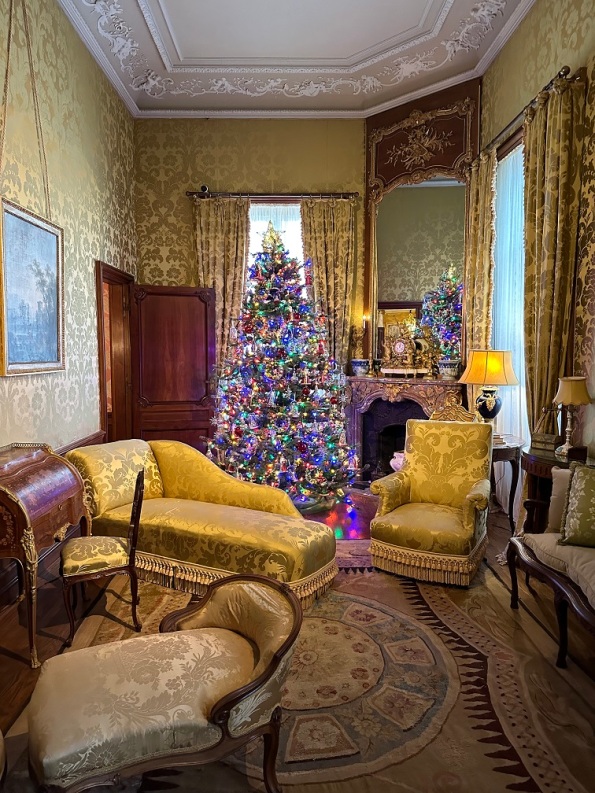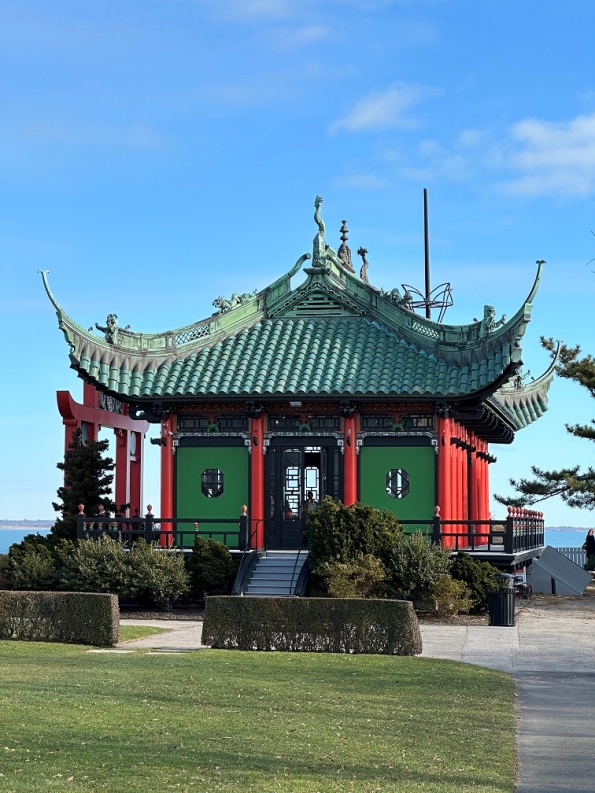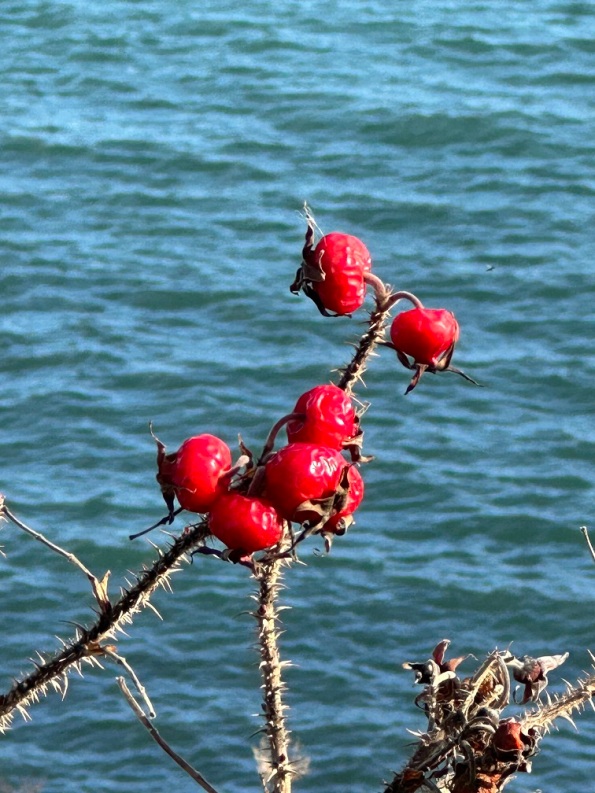Latest Wine News and Updates
There is never a dull moment in the world of wine – and there is not enough time in the day to track all the latest happenings. Here is a collection of recent and most notable wine news and updates.
Mars – wine’s next frontier
Yes, it is Mars, the fourth planet from the Sun. What Mars has to do with wine? If you ask Elon Musk, a lot. A relentless entrepreneur now has his sights on the world of wine, and apparently, he found a way to connect wine with another one of his passions – space. It appears that the 4 years long study conducted at UC Davis demonstrated that grown in space, the grapes had shown great potential for developing unparalleled taste profile while offering a substantial yield per vine, enabling the production of top-level wines at somewhat reasonable prices. Elon Musk teamed up with Paul Hobbs who was a consulting winemaker on the UC Davis project, and now he is building a fully enclosed vineyard set that will be delivered to Mars using a Space XM rocket. The vineyard will be installed and managed by the robotic staff, and the first harvest is expected to take place in 2030. The wine will be fully processed on Mars up to the bottling stage and will be delivered to Earth by the same Space XM rocket. No other details are available at the moment.
Screaming Eagle is going to produce what?
Screaming Eagle, the most iconic of all California wineries is secretly working on a new project, and it is not wine. Starting in 2028, the top 10% of the Screaming Eagle mailing list customers will have an opportunity to purchase the Marijuana extract, dissolved in neutral spirit and packaged into 175 ml bottles. The Marijuana plants are growing right between the Cabernet Sauvignon vines at Screaming Eagle vineyards. The plants are harvested by hand and processed within 3 hours of arrival to the winery, to retain absolute freshness. By growing in such symbiotic conditions with grape vines, marijuana plants acquire unique tasting characteristics and the elixir earned lots of praise from the focus group involved in the testing of this new product. The availability will be extremely limited. The pricing had not been publicly disclosed yet.
Coravin + AI =
Coravin, the utmost innovator and maker of wine tech gadgets teamed up with Google and Nvidia to add AI technology to the new top-tier A+W wine preservation systems. Each A+W device will be equipped with a Nvidia chip and connected to the Google AI cloud. The A+W device will be conducting real-time organoleptic analysis of the wine and the results will be further processed by the AI cloud to be able to assess the aging of the wine and drinking habits of the Coravin customers. All collected data will be also shared with the producers. It is expected that the next model of A+W will be able to detect non-ideal serving conditions of the wine and heat, cool, or filter the wine as needed for the optimum taste while the wine is being poured. Coravin’s chief scientist also predicts that at some point the Coravin devices will become smart enough to talk to each other and share their owner’s stories.
Amazon wine
Amazon finally decided to join the wine fray and start producing its own wines. Well, it is too early to talk about Amazon vineyards – for now, Amazon teamed up with Washington’s hallmark producer, Chateau St. Michelle to produce wine under Amazon labels. Amazon decided to use creative names for their wines, so the inaugural release will see “Mine is Better” Merlot, “Mine is Bigger” Cabernet Sauvignon, “Bottoms Up” Chardonnay, and “Sugar Rush” dessert wine.
Also taking the wine story even further, all the wine mentions in the Kindle books will become clickable in the text and readers will be able to order wines mentioned in the books with one click directly from their Kindle device. Inadvertent orders might be a concern here, so 007 readers, beware – Bollinger Champagne recently increased in price…
Wine G to Z
A concern about Gen Z not being interested in wine had been widely circulated throughout wine industry publications. E & J Gallo Winery, the biggest wine producer in the US, decided not to leave the wine story of Gen Z to a chance. E&J Gallo developed a special application called WineGZ to allow Gen Zs to fully customize their wine experience. As project director, Lotta Drinkin, explained “Gen Zs of the verified drinking age based on their country of residence will be able to fully customize their wine experience by selecting grapes, type, material and shape of the bottles, and many other characteristics to their exact liking”. For example, the grapes can be chosen strictly based on the carbon footprint of the vineyards, the ESG rating of the country of origin, and the social score of the winemaker. There is a choice of material for the bottle from glass to plastic to cardboard to metal to clay, and the shape of the bottle can be round, rectangular, or even “upload your own design” shapes. Based on the initial raving feedback, this project is expected to revolutionize the relationship between Gen Zs and the wine industry.
That’s all I have for you for today, but more news is coming. Cheers to the wine news and updates!
Month in Wines – January 2024
Ahh, the difference between the picture in your head and the reality. I know that I’ve written “Month in Wines” posts in the past, to discuss the wines I had during a given month. What I didn’t realize was that the last “Month in Wines” post was written 9 years ago, in 2015. Oh well, such is life. Let’s get to our subject – the wines I had during January of this year.
I would say that January, and December for that matter, are usually a bit more special, as both months are centered around holidays and celebrations. For a variety of reasons, we got to celebrate New Year, our most favorite holiday, on 3 separate occasions, and every one of those celebrations involved bubbles and special wines. Here are my brief notes on what transpired in January 2024, sorted by the type of wines.
Sparkling:
NV Veuve Clicquot Brut Champagne (12% ABV) – of course, no introduction is needed. As the most marketed Champagne brand, I find it annoying and thus drink rarely. We had a few bottles that my wife received as a present at work a few years back, so I decided to open one of them. The wine was not bad, I guess better than I expected. Not anything that would blow your mind off, but solid and drinkable (but not craveable if this is even a word).
NV André Chemin Brut Tradition Blanc de Noirs Champagne (12% ABV) – my favorite Champagne available from WTSO (or at least it used to be, great value at $26.99). Round, playful, beautiful toasty notes and perfectly balanced.
NV Laurent-Perrier La Cuvée Brut Champagne (12% ABV) – everything is better from the magnum right? Nice, clean, classic.
2016 Secret Indulgence Brut Blanc de Blancs Sparkling Wine Napa Valley (12.5% ABV) – a bit more substance than a typical Champagne. Just a touch more body, a bit more fruit, but overall perfectly restrained.
NV Maison Laudacius Cuvée Réservée Brut Méthode Traditionnelle Montlouis-sur-Loire AOP (12% ABV) – I grabbed this Cremant from the WTSO selection right before the holidays. This was nice and round, with clean acidity and just a touch of the fruit.
2017 Veuve Doussot Brut Cuvée Ernestine Champagne (12.5% ABV, 70% Pinot Noir, 30% Chardonnay, disgorged January 2022) – this one was just okay. Bubbles, but not much else to report.
NV Duval-Leroy Brut Reserve Champagne (12% ABV) – nice, round, clean, classic. A hint of apple, perfect acidity.
2011 Castello Bonomi Cru Perdu Millisimato Franciacorta (12.5% ABV) – excellent. Very generous, round, refreshing, a clean profile with a touch of fruit and a great substance.
2012 Charles Clément Brut Champagne (12% ABV, 60% Chardonnay, 20% Pinot Noir, 20% Pinot Meunier) – excellent specimen of a vintage Champagne. Toasted notes, brioche, fine mousse, all around delicious.
NV Henri Champliau Brut Authentique Crémeant de Bourgogne AOC (12.5% ABV, 85% Pinot Noir, 15% Chardonnay) – Zak, who brought this wine, mentioned that a “tik-tok sommelier” compared this wine with Veuve Clicquot and said that they are literally identical in the taste profile with this Cremant only costing a fraction of the Veuve. Upon first taste, we found no similarities, and the wine overall was kind of subpar, so we had to put it aside enclosed with the Champagne bottle sealer. The next day the wine was still not interesting. On the third day, it showed a much bigger body and became much more round and pleasant. I still don’t think the comparison with Veuve stands, but go figure…
NV Giacomo Scagliola SiFaSol Moscato d’Asti DOCG (5.5% ABV) – of course, this is a lightly fizzed sweet wine, but we had it as an aperitif, hence is it listed with other sparkling wines. When it comes to Asti wines, it is all about balance and acidity – and succulent white peaches in this wine were perfectly balanced by the lemony acidity, so overall the experience was light and refreshing.
Whites:
2010 CVNE Monopole Rioja White Wine (13% ABV, 100% Viura) – I love unexpected [good] surprises, and this was definitely the one. I always enjoyed Monopole, the oldest white wine produced in Rioja (the first vintage was produced 110 years ago – in 2014) – but typically as a fresh, young wine. I kept one bottle as an experiment, not expecting anything special. The wine was excellent – not at the level of mature Riesling or a well-made white Burgundy, but it was good in its own class, with white-stone fruit, white plum, and lemon on the palate, and a tiny hint of oxidative/sherry notes, still with freshness and well noticeable acidity. Don’t know if it would age for much longer, and I was happy that I opened it now.
2015 Château Pape Clément Grand Cru Pessac-Leognan (14.5% ABV) – unlike the previous wine, this was not a good surprise. A very strange palate which I can’t even describe – kind of medicinal profile with basil and currant leaves, rather overwhelming. “Strange” would be the best descriptor.
2011 Peter Michael La Carrière Chardonnay Knights Valley Sonoma County (15.2% ABV) – another disappointing wine. 2011 was not a good year in California, and this wine was simply bitter and lacked any sort of balance.
Reds:
2006 St. Francis Old Vines Zinfandel Pagani Vineyard Sonoma Valley (15.6% ABV) – I kept this trio for a while but decided that the time had come to drink them. All 3 wines were very similar, focusing on blackberries, a hint of cherries and fresh herbs, round and delicious. I can’t complain about either one – they were all gone very quickly.
2007 St. Francis Old Vines Zinfandel Pagani Vineyard Sonoma Valley (15.4% ABV) – 2007 was the biggest wine of the 3, still retaining the same core of the fruit and herbs, but more assertive in its expression on the palate.
2008 St. Francis Old Vines Zinfandel Pagani Vineyard Sonoma Valley (15.4% ABV) – possibly the most elegant of the 3. Again, same profile, but with more finesse and restraint, focused on elegance.
2009 Bibi Graetz Testamatta Toscana IGT (14% ABV) – I was hoping it would be great, and it was not. Another disappointment of the tasting.
2005 ArPePe Sassella Vigna Regina Riserva Valtellina Superiore DOCG (13% ABV) – I have a lot of respect for ArPePe wines, but for whatever reason, this was far from amazing. I would describe it as “lean”. It is possible that the wine was open during its “sleeping” phase, but I would never be able to find out now.
2001 La Serena Brunello di Montalcino DOCG (14.5% ABV) – this was an interesting experience. From the get-go, the wine was not bad, with a pleasant dark cherries profile and good acidity. It was lacking a body a bit, so we decided to decant it. The decanter didn’t make much of a difference, with the wine remaining pleasant but not exciting. During the next two days, the wine transformed, showing a powerful structure and becoming more assertive. This wine could probably wait for another 5-10 years. Oh well…
2016 Carlisle Two Acres Russian River Valley Sonoma County (14.9% ABV, Mourvèdre, Petite Sirah, Syrah, Pelourcin, Carignane, Alicante Bouschet) – a rare case of Carlisle missing the mark. I can only assume I opened the wine while it was in its “sleeping” phase – at the moment it was simply lacking balance, and it didn’t improve even over the next few days. Strange, but happens.
2010 Clarendon Hills Brookman Merlot Wine of Australia (14.5% ABV) – I saw a very discouraging review of this wine somewhere online (might be Vivino), but somehow was convinced that my experience would be very different. No such luck. If I would ever decide to present the list of the worst wines of the year, this would be definitely one of the top contenders. This was a wine that showed nothing – not on the nose, not on the palate. Not good…
2017 Quinta do Vale Dão DOP (13% ABV, 40% Touriga Nacional, 40% Tinta Roriz, 20% Alfrocheiro) – Portuguese wines represent amazing value, and this was a simple proof of that. For under $10, this wine was singing – fresh, succulent berries, perfectly integrated tannins, playful, delicious.
2009 Sauvella Luscinia Canta Costers del Segre DO (14.1% ABV, Syrah, Cabernet Sauvignon, Grenache) – Spain never ceases to amaze. An eclectic mix of grapes (who blends Cabernet Sauvignon with Syrah and Grenache?) delivering outstanding wine – fragrant, playful, full of fresh succulent dark fruit and herbs, well-integrated tannins and long finish. By the way, 2009 is a current release (available in the stores now) and thought-provoking.
2017 Campochiarenti San Nicola Riserva Chianti Colli Senesi DOCG (14.5% ABV) – classic and precise. Beautiful, layered Chianti with all the attributes – succulent dark cherries, sweet tobacco, leather, perfect minerality, wonderful bouquet and overall just a quintessential Italian wine.
2008 Achaval-Ferrer Quimera Mendoza Argentina (14% ABV, Malbec, Merlot, Cabernet Sauvignon, Cabernet Franc, Petit Verdot, 12 months in 40% new and 60% old French oak barrels) – my last bottle. I can’t recall why but I was not happy about the previous bottle opened a few years back, so I had a bit of trepidation opening this one on the last day of the month. The wine was just perfect. Roll-off-your-tongue smooth, velvety tannins, succulent cherries surrounded by the black fruit. Perfectly balanced and supremely delicious.
This concludes the story of January month in wines. As you can tell, there were clear highs and there were clear lows. How was your January in wines?
The work on a sequel has already started.
Cheers!
2021 UGCB Vintage Preview
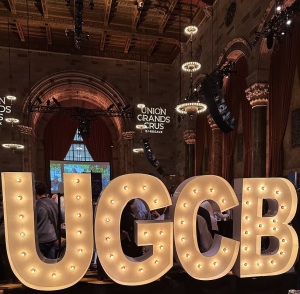 Do you ever get the feeling that you already did something, and then, after spending a good half an hour looking for it you realize that you only thought about doing that but actually you never have?
Do you ever get the feeling that you already did something, and then, after spending a good half an hour looking for it you realize that you only thought about doing that but actually you never have?
This is my story with the Union des Grands Crus de Bordeaux tasting – I already had 3 opportunities to write about this Bordeaux Grand Crus tasting, and have not done that – and was sure that I did – but only in my mind. Thus finally I want to correct the situation so I will have an actual record.
Let’s start with a short explanation of UGCB, the Union des Grands Crus de Bordeaux. UGCB was founded in 1970s by a group of Bordeaux winemakers to help promote Bordeaux wines in Japan. From that day onward, the promotion of the best Bordeaux wines around the world is what the UGCB has been doing. To give you the current set of numbers (as presented on the UGCB website in January 2024), UGCB has 131 members, all of them Grand Crus throughout the Bordeaux territory. UGCB organizes 80 events per year throughout 15 countries and 65 cities, bringing together 50,000 professionals and wine enthusiasts to taste Bordeaux wines.
For many years, the UGCB tasting has taken place in January in New York City, and all of the events I attended through the years have been at Cipriani restaurant in midtown Manhattan. The 2024 event showcased the 2021 vintage, with about 80 wineries participating, pouring about 90 wines during the 3.5-hour trade tasting event (consumer tasting was a separate event taking place in the evening).
When it comes to events like this, busy and crowded, when you have to try to extend your hand holding the glass between the people’s backs, I’m not good at taking notes – handling the glass, the phone, notebook, and pen is just too much. So I primarily was taking pictures of the wines I liked and was trying to obtain an overall impression about the vintage in general and specific sub-regions in particular. For what it is worth, this is what I’m sharing with you here.
2021 Bordeaux vintage
While tasting wines, I asked many winemakers how they would assess the 2021 vintage. Based on what I heard, I got a mixed feeling, so here is how I see it. The 2021 was good overall, not great. Rain presented somewhat of a challenge, bringing powder mildew as a consequence. 2021 was also cooler than let’s say, 2020. 2021 also resulted in a lesser yield than 2020. Overall wines are leaner than 2020 but well structured. And my impression was also that winemakers had to work harder to achieve good results. To put things into perspective, the Bordeaux 2020 was outstanding, with pretty much ideal weather conditions throughout the whole season (still regret not writing about it on time). And I was told that 2022 was even better than 2020, which would, I guess, make it a proverbial “vintage of the century” – we just need to wait for a year and see.
Below are my bit more detailed impressions, primarily on the appellation level. These are all the wines that I liked to various degrees, with the top favorites shown in bold. As a general observation, I was surprised by the amount of the new oak used across the board.
Note – all of the wines below are Grand Cru wines, hence I didn’t add “Grand Cru” to every wine name below.
Pessac-Léognan – this is the only appellation in Bordeaux that produces both white and red wines at the Grand Cru level. I definitely enjoyed 2021 whites less than 2020. Most of the reds were just okay, nothing special.
2021 Château Smith Haut Lafitte Blanc Pessac-Léognan
2021 Domaine de Chevalier Blanc Pessac-Léognan
2021 Domaine de Chevalier Rouge Pessac-Léognan
2021 Château de Fiuzal Blanc Pessac-Léognan
2021 Château Malartic-Lagravière Blanc Pessac-Léognan
2021 Château Malartic-Lagravière Rouge Pessac-Léognan
2021 Château Olivier Blanc Pessac-Léognan
Margaux – It was hard to find anything I liked in Margaux – I don’t know why, but literally all the wines I tried were incredibly tannic, instantly shutting down the palate.
2021 Château Brane-Cantenac Margaux
2021 Château Rauzan-Ségla Margaux
Pauillac – no specific impressions, but I liked comparatively more wines from this appellation.
2021 Château d’Armailhac Pauillac
2021 Château Clerc Milon Pauillac
2021 Château Duhart-Milon Pauillac
2021 Château Grand-Puy Ducasse Pauillac
2021 Château Lynch-Bages Pauillac
2021 Château Haut-Batailley Pauillac
2021 Château Batailley Pauillac
Pomerol – these Merlot-based wines overall were softer and more approachable than Cabernet-based ones.
2021 Château Petit-Village Pomerol
2021 Château Le Gay Pomerol
2021 Château Le Bon Pasteur Pomerol
Saint-Émilion – I thought that Merlot might be a saving grace in the 2021 vintage, but apparently it is not as I only liked a few wines from this Merlot-driven appellation.
2021 Chateau Valandraud Saint-Émilion
2021 Château Villemaurine Saint-Émilion
Saint-Estèphe – no general impressions, very few wines were present
2021 Château Phélan Ségur Saint-Estèphe – might be my second-most favorite in the tasting.
Saint-Julien – same as with Pauillac, I liked quite a few wines here.
2021 Château Beychevelle Saint-Julien
2021 Château Langoa Barton Saint-Julien – this wine was tasty and had a standout, playful label.
2021 Château Léoville Barton Saint-Julien
2021 Château Léoville Poyferré Saint-Julien
2021 Château Gloria Saint-Julien
2021 Château Saint-Pierre Saint-Julien – this was probably my favorite wine of the tasting.
Sauternes – I had bad luck with Sauternes during UGCB tastings in the earlier years, as many wines were simply not balanced, with pronounced bitter notes. At this tasting, I literally liked them all. Note that the wines were presented from the different vintages.
2021 Château Rainey Vigneau Sauternes
2016 Château Sigalas Rabaud Sauternes
2016 Château Guiraud Sauternes
2018 Château Doisy-Védrines Sauternes
2016 Château Bastor-Lamontagne Sauternes
There were more appellations in the tasting (Haut-Médoc, Listrac-Médoc, Moulis-en-Médoc), but I didn’t like any particular wines from those so they are not covered here.
Here you are my friends – my report from the 2024 Union des Grands Crus de Bordeaux tasting. I finally did it.
And I’m already looking forward to the 2025 tasting of the 2022 vintage. Will see if reality will match my expectations. Cheers!
The Art Of Italian Wine: Masciarelli
Italian wines are special.
Well, this statement says a lot and nothing at the same time.
Remember, wine is personable and subjective. Everyone has a right to have their own opinion, and that opinion can only be subjective.
What makes Italian wines special? I will allow myself to make a bold claim – Italian wines are distinguishable. At least the well-made Italian wines produced from the core Italian grape varieties. What I’m saying is that when you taste Chianti, Brunello, Nero d’Avola, Montepulciano, Barolo and others, you might not identify the exact wine and the exact producer, but you would be reasonably sure you are drinking an Italian wine.
When you drink wine made from Cabernet Sauvignon or Chardonnay, you might be well able to identify the grape, but the origin of the wine can be equally anywhere in the world – Bordeaux, California, Italy, Spain, Washington, Australia, Chile and everywhere in between can be a source of a great Cabernet Sauvignon. This would be also true for the absolute majority of the so-called international grape varieties – Cabernet Sauvignon, Merlot, Pinot Noir, Grenache, Syrah, Chardonnay, Sauvignon Blanc. But when you taste Sangiovese made in Italy, you might be easily mistaken about the exact region, but you would be reasonably certain you are drinking an Italian wine. An important disclaimer – it would definitely help if this would be a well-made Italian wine.
Here is a great example of the well-made, and thus easily recognizable Italian wine – or, rather, wines – Tenute Masciarelli in Abruzzo in Italy.
In terms of “wine time”, Masciarelli is a very young winery, founded in 1981 by Gianni Masciarelli. However, the impact in the wine world is not directly a function of time. Wine has been continuously produced throughout Italy for a few thousand years. In Abruzzo, a province located in central Italy along the Adriatic Sea, Montepulciano is the king. Simple Montepulciano red wines were produced forever in the region, perfectly quaffable, but not really comparable, for example, to the wines of Tuscany. Gianni Masciarelli spearheaded the change in the region, both in grape growing (he introduced the French Guyot training system for vines in the region) and production – he was the first to start using French oak barrels for aging the Montepulciano Abruzzo and Trebbiano d’Abruzzo wines. 1984 saw the first vintage of the Villa Gemma Montepulciano d’Abruzzo, the first of its kind single-vineyard Montepulciano d’Abruzzo wine, which will be celebrating 40 years of production this year.
Today, Masciarelly sustainably produces wines from all 4 provinces in Abruzzo. Annual wine production exceeds 1 million bottles across 7 different lines and 22 wine labels. A few months back, I had an opportunity to review Masciarelli’s introductory Linea Classica – 3 very well-made wines that were not only tasty but easily lasted for 5 days after being open – a testament to quality. Now, I had the pleasure of reviewing the latest releases from two more wine lines – Marina Cvetic and Villa Gemma.
Marina Cvetic line includes 2 of the classics – Trebbiano d’Abruzzo Riserva and Montepulciano d’Abruzzo – the second one is my perrenial favorite, I’m always happy to drink it. Additionally, the Marina Cvetic line includes four of international grape varieties (Chardonnay, Cabernet Sauvignon, Syrah, and Merlot) – however, I don’t think those are available in the US.
Villa Gemma, the winery’s flagship and the oldest produced line, includes three of the Abruzzo’s classics – white blend, Rosé, and Montepulciano d’Abruzzo Riserva.
Here are my notes:
2020 Masciarelli Marina Cvetić Trebbiano D’Abruzzo Riserva DOC (14% ABV, $60, 100% Trebbiano Abruzzese, 20-50 yo vines)
Light golden
A hint of tropical fruit, Whitestone fruit, honeysuckle
Round, clean, fresh, a hint of butter, soft and creamy texture with Meyer lemon finish
8, the wine is a bit aggressive when just opened, don’t over-chill it (I would serve it around 50F) and let it breathe, maybe 30 minutes in a decanter. Will stay fresh in the fridge for a few weeks.
2022 Masciarelli Villa Gemma Abruzzo Bianco DOC (14% ABV, $24, 50% Trebbiano, 30% Pecorino, 20% Cococciola)
Straw pale
whitestone fruit, lemon, clean, inviting
Crisp, clean, good acidity, lemon, expressive minerality, good balance
8, excellent
2022 Masciarelli Villa Gemma Cerasuolo D’Abruzzo Superiore DOC (14% ABV, $24, 100% Montepulciano)
Beautiful cranberry pink
Restrained nose of fresh strawberries, pleasant
Strawberries, cranberries, fresh, bright, excellent acidity, good balance, delicious
8
2019 Masciarelli Marina Cvetić Montepulciano d’Abruzzo Reserva DOC (14.6% ABV, $38, 100% Montepulciano, 15-30 yo vines, 12 months in French oak barrels)
Dark garnet, almost black
Dark cherries, espresso, tar, mocha, medium intensity
Dark cherries, silky smooth with beautifully present tannins, layered, round, well present, delicious.
8+, these are day 2 and day 6 notes, this wine is made of the long haul, was not very enjoyable upon opening, you need to decant it for 2-3 hours or forget it in the cellar for 10-15 years as the least.
2018 Masciarelli Villa Gemma Riserva Montepulciano D’Abruzzo DOC (15% ABV, $98, 100% Montepulciano, 35 yo vines, 12 months in French oak barrels)
Dark garnet, practically black
Black cherries, a hint of a barnyard
Black cherries, cherry pits, silky smooth roll-of-the-tongue texture, good acidity, excellent balance
8+, this is a big wine. It is surprisingly pop’n’pour, but will improve with the cellaring.
Here you are, my friends – wine, a liquid art form, made in Italy.
Do you think that Italian wines are easily distinguishable? What are your favorite Italian wine producers?
2023 Uncovered
“Uncovered” is an interesting word. On one side, it means that something is simply not covered, like a grill left uncovered for the night. Uncovered also means that a discovery will be made, a secret will be revealed, something will “lose its cover”.
I intend to talk about both meanings.
Let’s talk about revealing.
I have a secret closet – compartment, shelf, what have you. I don’t like it. It bothers me. I always remember it exists, and it is daunting and depressing. This closet contains posts that should’ve been written and never were. I’m not talking about just some interesting post ideas which never materialized. I’m talking about winemaker dinners, exciting, insightful, delicious – but not written about. Happening 5 years ago – and still hurtful to think about. Wine tastings – too many to remember. Some are reasonably recent, such as the 2020 Bordeaux Cru Bourgeois tasting (by the way, if you like Bordeaux, 2020 is the vintage to get by the caseload) – and some going back to much earlier. And even samples – I have some samples I didn’t get to in ages… I’m telling you, this closet is not a happy place…
Sad closet aside, let’s talk about some of the things that were not covered in 2023.
Wines
Many wonderful wine experiences of 2023 were never discussed in this blog. I don’t have any notes, so I can’t recover from it – but I can still share some memories – with the help of photographs, of course. Let’s take a quick trip back to 2023.
I had a good reason to open these two 21 years old (young?) Rioja wines from Lopez de Heredia. Just look at the state of these corks… and the color of this red wine. Both were superb, but I will not tell you anything more than that.
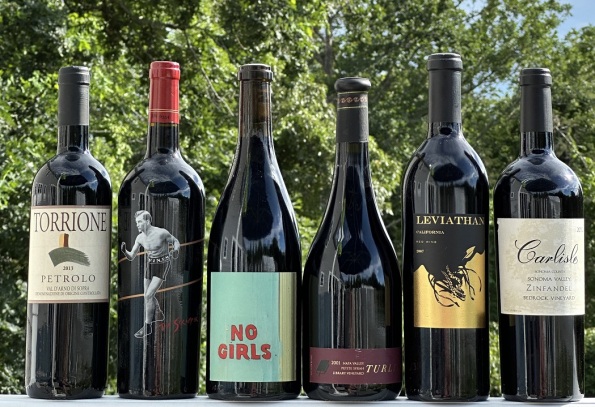 Then there were a couple of trips to Cape Cod, where we always drink well. In this set, there were good and bad memories at once. 2013 Torrione Petrolo was quite underwhelming, and 2001 Turley Petite Sirah was surprisingly not great – as I said, I don’t have any detailed notes, only remember my disappointment with these two wines. 2007 Leviathan was superb, though, and it made it into the top 23 of the 2023 list.
Then there were a couple of trips to Cape Cod, where we always drink well. In this set, there were good and bad memories at once. 2013 Torrione Petrolo was quite underwhelming, and 2001 Turley Petite Sirah was surprisingly not great – as I said, I don’t have any detailed notes, only remember my disappointment with these two wines. 2007 Leviathan was superb, though, and it made it into the top 23 of the 2023 list.
The sunset through the glass was unbeatable:
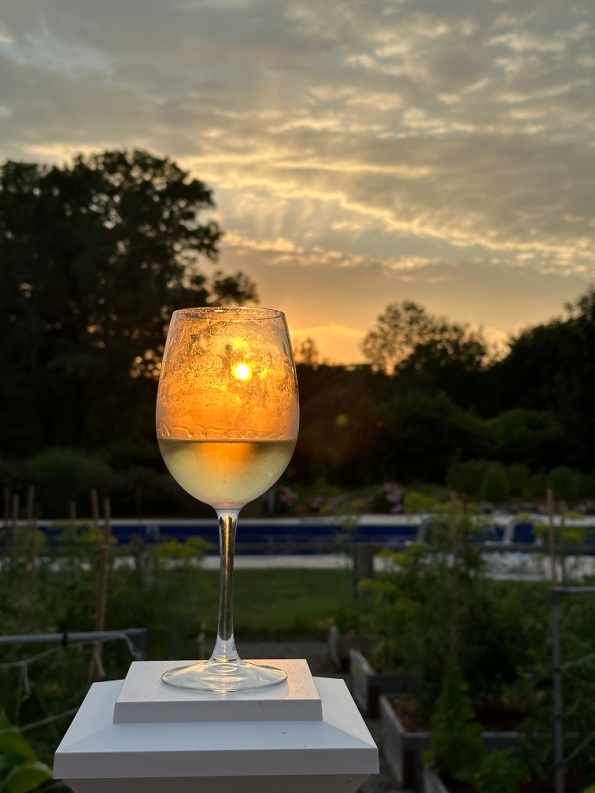
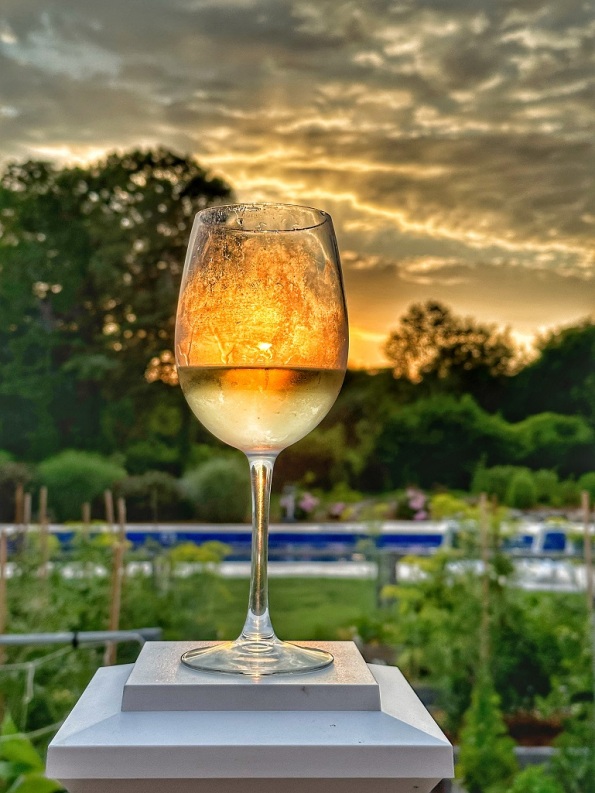
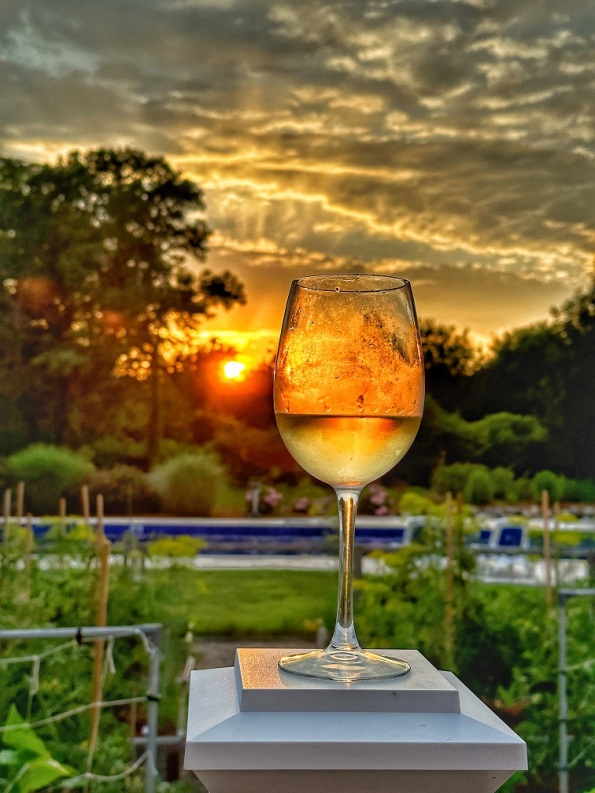 Next, I tasted a delicious Cabernet Sauvignon from Napa Valley:
Next, I tasted a delicious Cabernet Sauvignon from Napa Valley:
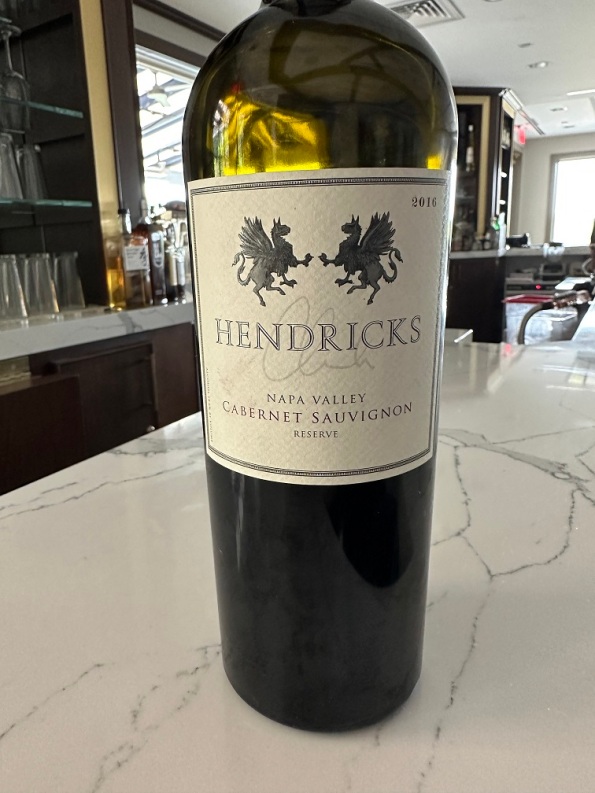 This 2016 Hendricks Cabernet Sauvignon Reserve Napa Valley was perfectly on point in its Cabernet sauvignon expression, with just enough of everything (cassis, eucalyptus, tannins, acidity).
This 2016 Hendricks Cabernet Sauvignon Reserve Napa Valley was perfectly on point in its Cabernet sauvignon expression, with just enough of everything (cassis, eucalyptus, tannins, acidity).
Another trip to the Cape:
Both 2020 and 2021 Campochiarenti Chianti Colli Senesi were outstanding, one better than the other – this is why they were included in the top list. San Nicolas is always perfect. 2013 Campochiarenti Passione Divina Vini Storiche was excellent, but so was 2013 Stolpman Sangiovese, and literally surprising myself, I preferred Stolpman Sangiovese over the classic Italian version (#5 on the Top 23 of 23). 2016 The Family Barrel Shiraz from Barossa was also very tasty and perfectly restrained.
The last set was from a get-together with the wine friends:
This was an interesting set of wines. Nothing was mind-blowing probably with the exception of 1998 Gaja Rennina Brunello di Montalcino, which was simply superb. But overall, most of the wines were good. 2017 Dr. Konstantin Frank Amur was tasty, and a new rare grape (Amur) for my collection; 2018 Dr. Konstantin Frank Saperavi and 2020 Dr. Konstantin Frank Rkatsiteli were nice and tasty. Voruta Black Currant from Lithuania was also nice, with a delicious Cassis profile, and allowed me to add another checkmark to the Wine of the World collection. 2010 Vino Della Pace was simply surprising, as I didn’t expect the wine made from 855 grape varieties to last 13 years, but nevertheless, it was quite drinkable. 2021 Domaine de Chafalet Le Méphisto Gamaret from Switzerland was a touch gamey, crisp and fresh, easy to drink. Flor de Muga Rioja Rosé was excellent, more of a Provençal style, lean and crisp. Lastly, Capetta Dolce Asti DOCG was a perfect accompaniment for dessert with its cut-through acidity (#12 on the Top 23 of 23).
These wine experiences should’ve been covered better, but at least now these wines have some presence on this blog.
Wine tastings and events
I already mentioned the Bordeaux tasting which was not covered, and it will not be, as the 2021 Cru Bourgeois tasting is taking place merely in a week. Few other events still have a hope of coverage – Benvenuto Brunello and Chile Site Matters were two of the tastings that I still hope to write about. The same goes for the virtual tasting of the wines of Alentejo – I will make an effort to have all of them covered.
Travel
While I wrote last year about my trips to Nashville and Sweden, there were two trips to Belgium and another one to Greece that never made it to the blog – and you know how much I love inundating everyone with tons of pictures. The Belgium trip was also interesting because I accidentally came across Belgium wine which I didn’t even know Belgium produces, thus needing to add Belgium to the list of countries in the Wines of the World table. I still have a hope of correcting this, and at least writing about the Belgium trip, but we will see.
Why did I write this post?
This might be a reasonable question to ask. What is the point of this sort of self-pitying talk? When I only started writing this blog, I read many posts from others talking about blogging in general, their motivation and goals for blogging, and so on. One idea got stuck with me: we (writers) write this blog first and foremost for ourselves. This is the only reason to stay true to what you are doing. As soon as you start writing for “someone else”, you lose the core of your writing. So I needed this self-talk, I needed to get this pain and pressure out of the system – and now I feel better.
Mission accomplished.
Let’s get some wine writing done.
As Expected
Is “expectation” a wine term?
In a direct sense it is not, of course – “expectation” is not the name of the grape, not a wine descriptor, and not the name of the winemaking process. And nevertheless, for anyone who proclaims “serious affection, a.k.a love, a.k.a obsession” to the simple beverage produced from the grape juice, I would argue that “expectation” is a wine term, or at least, a wine-related term.
Expectations start from the very first look at the bottle – even before we see the label, the bottle’s shape and overall appearance initiate a thought process regarding the bottle’s content. Obviously, once we carefully look at the label, our expectations are enhanced further. Okay, young Barolo, I need to get the decanter ready. Ohh, this Sauvignon Blanc is too warm – I need to chill it before the guests arrive.
But then these are not even real expectations. Once you recognize the region, the grape, the producer – this is when the mind games of expectations start. Looking at the bottle of Opus One, Petrus, Penfolds Grange, or Dom Perignon, I’m sure that the mind of an average wine lover goes ballistic – “this is going to be amazing”. The brain would not accept anything less. Even after you try the wine, the brain will interject into the message from your palate if it is anything less than “oh my god, I love this”. But before I mount my favorite horse it appears that there is an idiom “to mount a hobbyhorse” (I hope there is a saying like this in English, as there is one in Russian), let me change the direction to where I’m actually trying to arrive.
As we are discussing the meaning of the wine term “expectations”, it is interesting to see how your expectations are built. Let’s say you tried a bottle of wine from an unknown producer, and you liked it. Then you tried another one. And another one – and I don’t mean in one sitting – slowly over time. As you keep liking the wines, your expectations are being built. You try new vintages, new wines from the same producer and your expectations keep growing. Once you become really familiar with the producer, you take a bottle you never had before, and before even opening it, you are confident that this will be a good wine – you expect nothing less. You might not love each and every wine from a given producer after you try them, but at least in terms of expectations, your ways are set. Just to give you an example, I expect excellent wines from La Rioja Alta, Lopez de Heredia, Field Recordings, Turley, Carlisle, Masciarelli, and lots of others – and yet while I’m writing this post, I’m drinking the wine from Carlisle that I don’t really enjoy at this moment (just opened the bottle, the wine needs to breathe). The fact that I don’t enjoy one particular wine doesn’t affect my general expectations – next time, holding a bottle of Carlisls in my hands, I would fully expect that I will like the wine “at hands”.
A “circle of expectations” is not cast in stone. As we taste wines from the new producer, we build confidence and our expectations are growing to the point of this unconditional trust. Today, I want to share with you one of my latest additions – Domaine Bousquet from Argentina.
 Domain Bousquet is not even 30 years old – it was founded in 1997, so in the wine world this is a very short period of time – but take a look at this simple picture above, which perfectly summarises Domain Bousquet’s achievements – Certified Organic with multiple designations, biodynamic Demeter certified, 1st in Argentina and 4 th in the world regenerative organic winery – you can continue researching this very impressive list on your own. But this is the wine we are talking about, so all of the certifications take a back seat to the content of the glass. What’s inside of glass matters – does it give you pleasure or not. And Domaine Bousquet produces damn impressive wines.
Domain Bousquet is not even 30 years old – it was founded in 1997, so in the wine world this is a very short period of time – but take a look at this simple picture above, which perfectly summarises Domain Bousquet’s achievements – Certified Organic with multiple designations, biodynamic Demeter certified, 1st in Argentina and 4 th in the world regenerative organic winery – you can continue researching this very impressive list on your own. But this is the wine we are talking about, so all of the certifications take a back seat to the content of the glass. What’s inside of glass matters – does it give you pleasure or not. And Domaine Bousquet produces damn impressive wines.
I was introduced to the wines of Domaine Bousquet exactly 3 years ago, and that introduction started with their Charmat method sparkling wines – organic, delicious, and inexpensive. Next, in August of the same year, 2021, I had an opportunity to taste an extended lineup of Domaine Bousquet wines, that were also excellent. Earlier this year I was blown away by their unoaked organic wines containing no added SO2, and then one more time in December when I tasted their Classic method sparkling wines which were world-class superb and an absolute steal at $18.
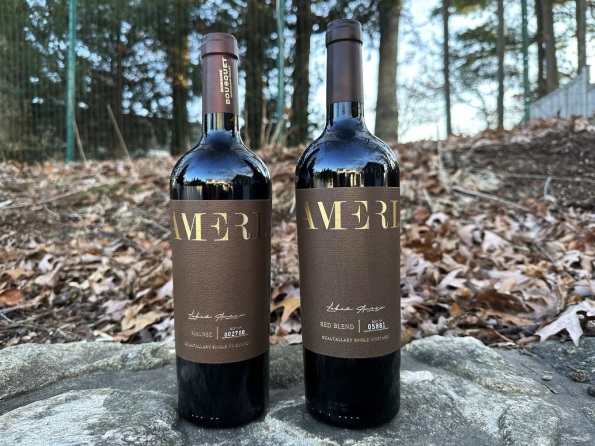 Now, I had an opportunity to taste some of their very best wines. These wines perfectly speak to my obsessed oenophile mind, as they are not even single-vineyard, but rather single-plot wines – and they are produced only in exceptional years. You know that I don’t like quoting the original winery notes, but I feel that in this case it is appropriate:
Now, I had an opportunity to taste some of their very best wines. These wines perfectly speak to my obsessed oenophile mind, as they are not even single-vineyard, but rather single-plot wines – and they are produced only in exceptional years. You know that I don’t like quoting the original winery notes, but I feel that in this case it is appropriate:
“Named for Domaine Bousquet co-owner Labid al Ameri, Ameri is not just“single vineyard” but “specific cluster,” and made only in exceptional years. At 1,257m/4,125 ft, the highest of the estate, the certified-organic vineyard, located in Gualtallary in the Andean foothills, gets a perfect combination of near constant intense daytime sunlight and huge day/night temperature differentials. The result is fruit with increased levels of sugar AND acid, flavor, and aromatics.”
Yes, I had expectations regarding these wines. I expected these wines to be well-made and tasty. And my expectations were met. Fully.
Here are my notes:
2020 Domaine Bousquet Ameri Malbec Gualtallary Mendoza Argentina (14.5% ABV, $37, 100% Malbec, 12 months in French oak)
Dark garnet, almost black
Cherries, plums, eucalyptus
Cherries, espresso, firm structure, good acidity, good balance
8, excellent
2020 Domaine Bousquet Ameri Red Blend Gualtallary Mendoza Argentina (14.5% ABV, $37, 60% Malbec, 20% Cabernet Sauvignon,10% Syrah, 10% Merlot, 12 months in French oak)
Dark garnet, almost black
Plums, fresh raspberries, mocha
Cherries, a hint of cassis, eucalyptus, sweet oak, perfectly integrated tannins, firm structure, excellent balance
8, delicious.
Both wines were just perfect from the get-go, but both also lasted for at least 5 days on the counter with the air being pumped out – a testament to the quality.
Here you are, my friends – all-organic, delicious, top-shelf wines from Argentina – delivering the pleasure.
As expected.
Happy New Year 2024!
And just like that another year became history.
I wish you a healthy and peaceful New Year 2024, filled with smiles, love, laughter, great wines, and memorable experiences!
Beautiful Lights, 2023 Edition
While I don’t celebrate Christmas, I still love the lights. I grew up celebrating the arrival of the New Year, and while this was borrowed from the Christmas traditions, there was always a tree for the New Year, ornaments, and lights.
It might be just me, but it seems that the holiday light displays are becoming more widespread, for sure when made as attractions. Or maybe it was always around and I just never took my time to notice them – but I definitely do now.
Newport Rhode Island is one of our favorite travel destinations in general, and particularly during Christmas. We visited Newport back in 2017 to see Christmas decorations, and thinking about that visit, I couldn’t believe that that visit took place 6 years ago. This year, we also decided to visit the Sparkling Lights display which was shown in the evening at the Breakers. As you can imagine, I have a bunch of pictures to share with you. But before we visit Newport, I would like to mention my hometown – Stamford, Connecticut.
Stamford always has some beautifully decorated houses we loved to visit over the years. But this year, we had a “notch up” experience. Driving back from our local supermarket, my wife said “hey, wait, I want you to turn around”. When I asked why, she said that she saw a glimpse of a nicely decorated house on a parallel street, and we should go see it. When we got there 2 minutes later, the view greatly exceeded my expectations – might be the best Christmas lights display I ever saw at a private house – and the best part was that we could park the car and just walk around the decorations. So let me start my inundating display with these pictures:
And now, here are the pictures from the Breakers, the Sparkling Lights display:
Here are a few pictures from the Elms:
And probably my favorite of the whole Newport trip – the Marble House:
Hope you enjoyed!
